CHAPTER 15
Advanced Wall Topics
More on walls? Really? It seems as though all we do is walls. Well, that's because buildings are composed mainly of walls. As you may have noticed, the exterior walls are compound wall structures with reveals and parapet caps. In the west wing, you have a staircase that is completely unsupported. It would be nice to add a wall to make those stairs less spongy. Given the fact that the west wing is a high‐end architectural woodwork area, that wall could use some trims that can be added right to the wall's profile. Also, we haven't touched on a curtain wall of any kind.
This chapter covers the following topics:
- Creating compound walls
- Adding wall sweeps
- Creating stacked walls
- Creating curtain walls
Creating Compound Walls
The first item to tackle is how to develop a wall with different materials as well as different layers (no, not Autodesk® AutoCAD® layers!). The exterior walls you've been using in this model are a prime example of compound walls. The bottom 3′ (900 mm) of the wall consists of concrete block, and the rest of the wall is brick. When you cut a section through the wall, you can see that the wall has an airspace as well as a metal stud–wall backup.
Usually, these chapters start with a claim that “the following procedure is so easy … a child could do it” (or something of that nature). The development of compound walls isn't the easiest thing you'll tackle in the Autodesk® Revit® software. This procedure is somewhat touchy, and doing it well takes practice. In this section, you'll create an interior wall with a wood finish on the bottom along with different wood material on the top. You'll also extrude a chair rail along the wall.
To get started, open the model you've been using to follow along. If you missed the previous chapter, go to the book's web page at www.wiley.com/go/revit2020ner. From there, you can browse to the Chapter 15 folder and find the NER‐15.rvt file.
The objective of this procedure is to create a compound wall from a basic wall. Follow along:
- Open the Level 1 West dependent floor plan view.
- On the Architecture tab, click the Wall button.
- In the Type Selector in the Properties dialog, choose Basic Wall: Generic ‐ 6″ (152 mm).
- In the Properties dialog, click the Edit Type button.
- Click Duplicate.
- Call the new wall West Stairwell Support Wall and click OK.
- Click the Edit button in the Structure row.
- Click into the Material cell for the Structure row, as shown in Figure 15.1.
- Click the […] button.
- In the Material Browser, select Metal Stud Layer, and click OK.
- Change the thickness to 5'1/2″ (140 mm) (see Figure 15.1).
- At the bottom of the Edit Assembly dialog, click the Preview button (see Figure 15.2).
- With the preview open, change View to Section: Modify Type Attributes.
It doesn't seem as though you've done much, but you've set the stage to start building your wall. It's time now to return our focus to the Layers field.
Adding Layers to the Compound Wall
If you're an AutoCAD veteran, the term layer takes on a different meaning. In Revit, the term layer, as it pertains to a wall assembly, represents a material layer that is assigned an actual thickness as well as its own material.
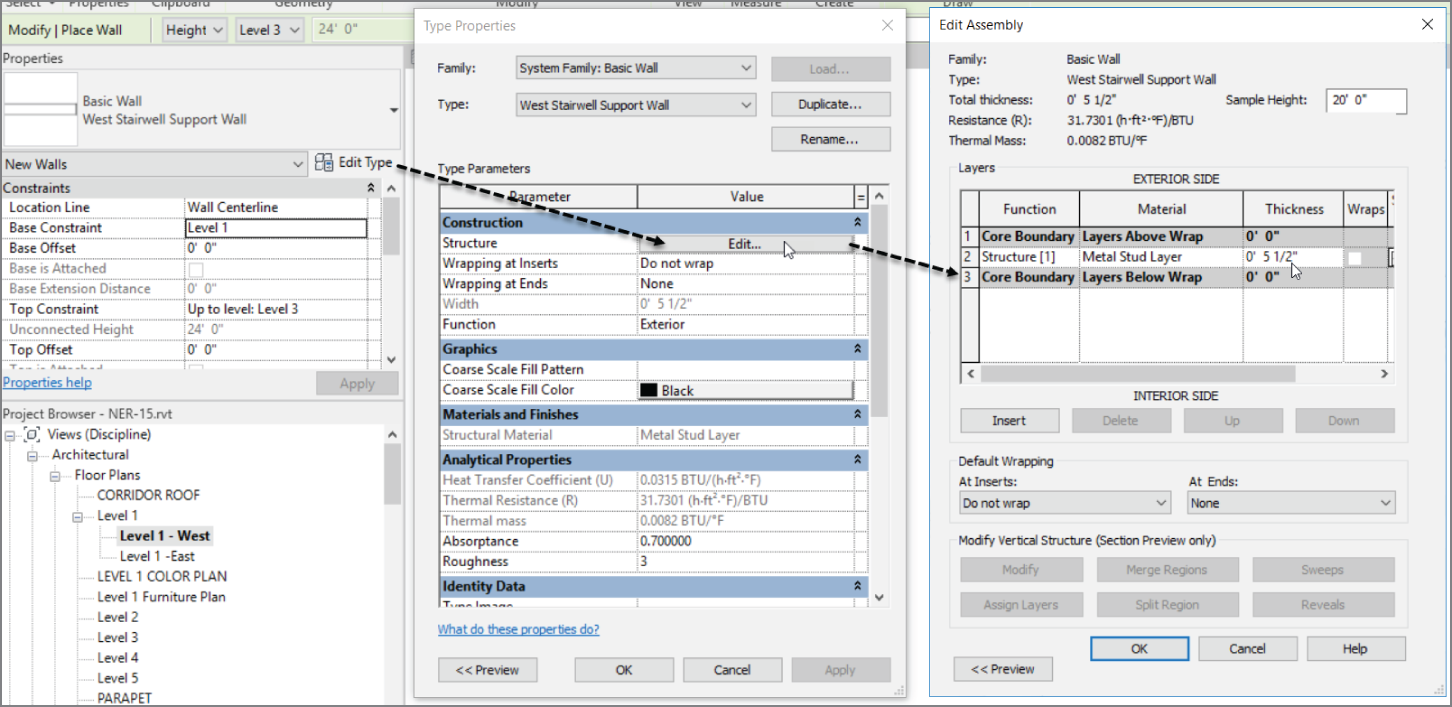
FIGURE 15.1 Changing the structure to a 5′ 1/2″ (140 mm) metal stud layer
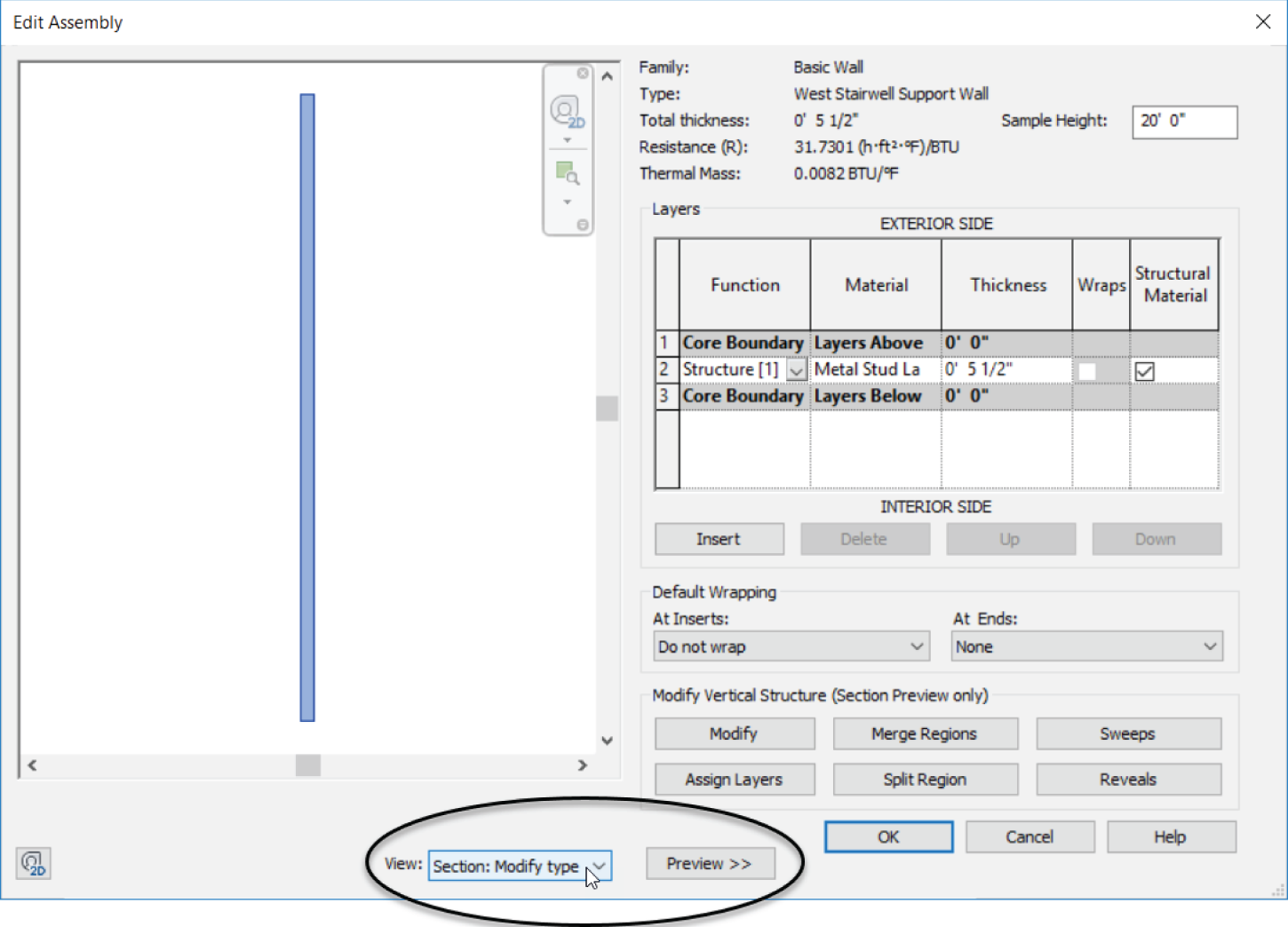
FIGURE 15.2 Changing the view to a section
As you can see in Figure 15.3, Revit understands the difference between interior and exterior. For the following procedure, you'll add materials to both the exterior and interior portions of the wall. Follow these steps:
- In the Layers area, click the number 1, as shown in Figure 15.3.

FIGURE 15.3 Clicking row 1 to highlight the entire row
- Click the Insert button. Revit creates a new layer above the one you select. The new layer is always set to Function: Structure [1], Material: <By Category>, and Thickness: 0.
- Change Function to Finish 1 [4].
- Click into the Material cell and click the […] button.
- Select Gypsum Wall Board.
- Click OK in the Material Browser.
- Change Thickness to 5/8″ (13 mm).
- Click row 4 (Layers Below Wrap).
- Click the Insert button.
- Click the Down button, as shown in Figure 15.4. It's located below the Layers area all the way to the right. Your new layer becomes 5.
- Change Function to Finish 1 [4].
- Click into the Material cell and click the […] button.
- Find and select Gypsum Wall Board.
- Click OK in the Material Browser.
- Change Thickness to 5/8″ (13 mm). Your Layers field should resemble Figure 15.4.

FIGURE 15.4 Adding a 5/8″ gypsum layer to the interior side of the wall
Now that the wall is wrapped with one layer of 5/8″ (13 mm) gypsum on each side, let's start placing the veneered plywood layers on the exterior of the wall.
In the next procedure, you'll add a 3/4″ (19 mm) plywood layer to the exterior of the wall. Follow along:
- Click 1 Finish 1 [4] (the top layer).
- Click Insert.
- Change Function to Finish 2 [5].
- Change Material to Mahogany (it's the mahogany material that has Plywood for the cut pattern). Click OK.
- Change the Thickness to 3/4″ (19 mm). Your wall's layers should resemble Figure 15.5.
- At the bottom of the dialog, click the OK button.
- Click Apply.

FIGURE 15.5 Adding the 3/4″ (19 mm) mahogany veneered plywood material
Next, let's go back in and split the wall materials in two. It would be nice if you could have cherry at the top and mahogany at the bottom. Revit gives you the ability to do this.
Adding New Materials by Splitting a Region
If you want more than one material along the face of a wall, you can use the Split Region command in the Edit Assembly dialog. The objective of the following procedure is to add a new material and then apply it to the top half of the plywood face:
- Click the Edit button in the Structure row.
- Click Layer 1 (the top mahogany layer).
- Click Insert.
- Change Function to Finish 2 [5].
- For Material, select Cherry, and click OK. (Don't give it a thickness. The next procedure takes care of that.)
- Notice you can pan and zoom in the preview dialog. Zoom in on the bottom of the wall as shown in Figure 15.6
- Click the Split Region button, as shown in Figure 15.6.
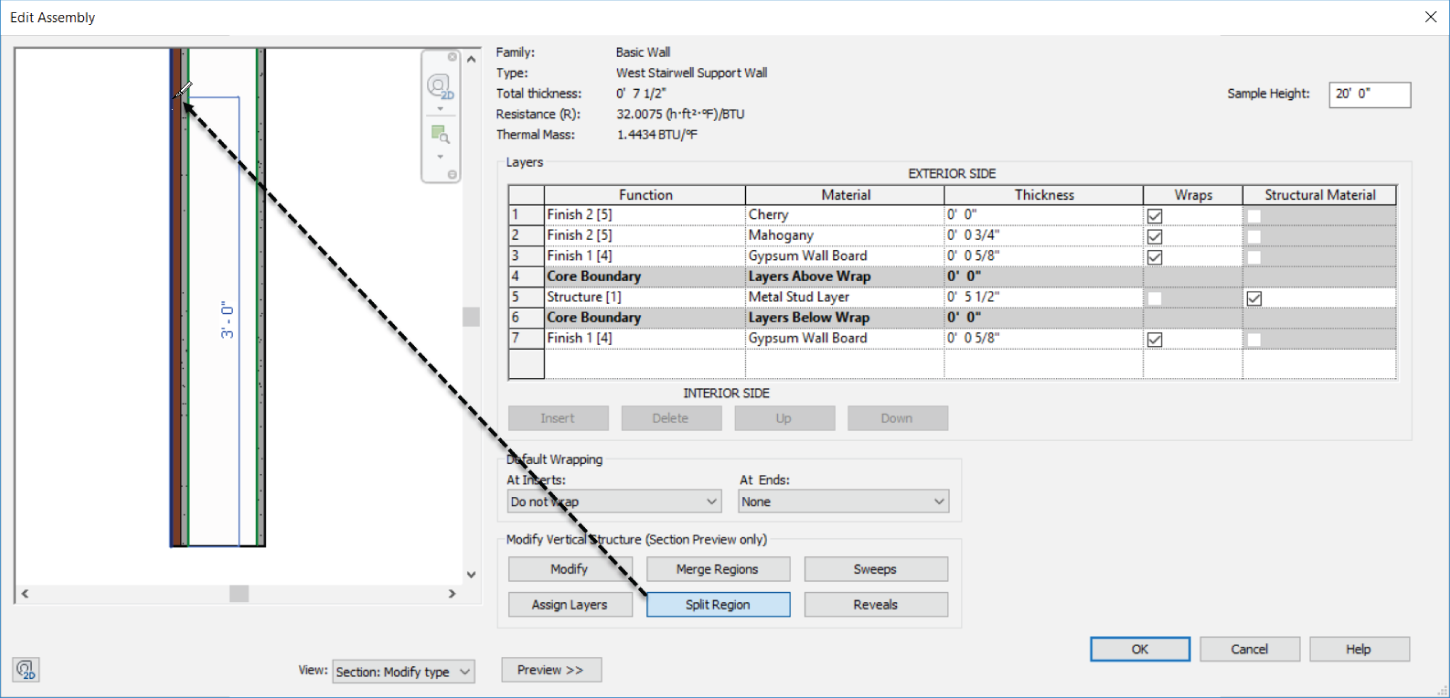
FIGURE 15.6 Cutting the plywood at a specific height
- Move your cursor up the plywood face. The cursor turns into a knife. You also see a short, horizontal line within the plywood; this indicates where the region will be cut.
- When you see 3′–0″ (900 mm) in the temporary dimension, pick the point as shown in Figure 15.6. Do not press Esc when you're finished! If you place the split in the wrong place, click the Modify button and then select the split line you just created. You can then click the dimension field to edit the location. There is also a direction arrow that specifies whether the split is set from the bottom up (what you just did) or from the bottom down.
You've split the plywood. The only thing left to do is to apply a new material to the upper region. You can accomplish this by using the Assign Layers button.
Assigning Material to Different Layers
The Assign Layers command lets you choose where you would like to assign a layer. This is useful in the context of this dialog because you aren't stuck without the ability to move the layers around the wall as necessary. Of course, when you split the wall layer as you just did, notice that the thicknesses of the two wood layers are set to 0 and Variable. Revit needs you to assign an alternate layer at this point.
Next, you'll assign the cherry layer to the upper portion of the plywood. Follow along:
- Pick the Layer 1 row (Cherry), as shown in Figure 15.7.

FIGURE 15.7 Assigning the cherry layer to the upper portion of the wall
- Click the Assign Layers button (see Figure 15.7).
- Move your cursor over the upper region of the plywood layer, and pick. Cherry is assigned to the upper portion of the wall, and the thicknesses are set to 3/4″ (19 mm) (again, see Figure 15.7).
- At the bottom of the dialog, click OK.
- Click Apply.
- Click the Edit button in the Structure row to get back to the Edit Assembly dialog.
- Pan to the top of the wall in the display, as shown in Figure 15.8.
- Click the Modify button.
- Hover your cursor over the top of the 3/4″ (19 mm) plywood.
- When the top of the plywood becomes highlighted, pick the line.
- Unlock the blue padlock.
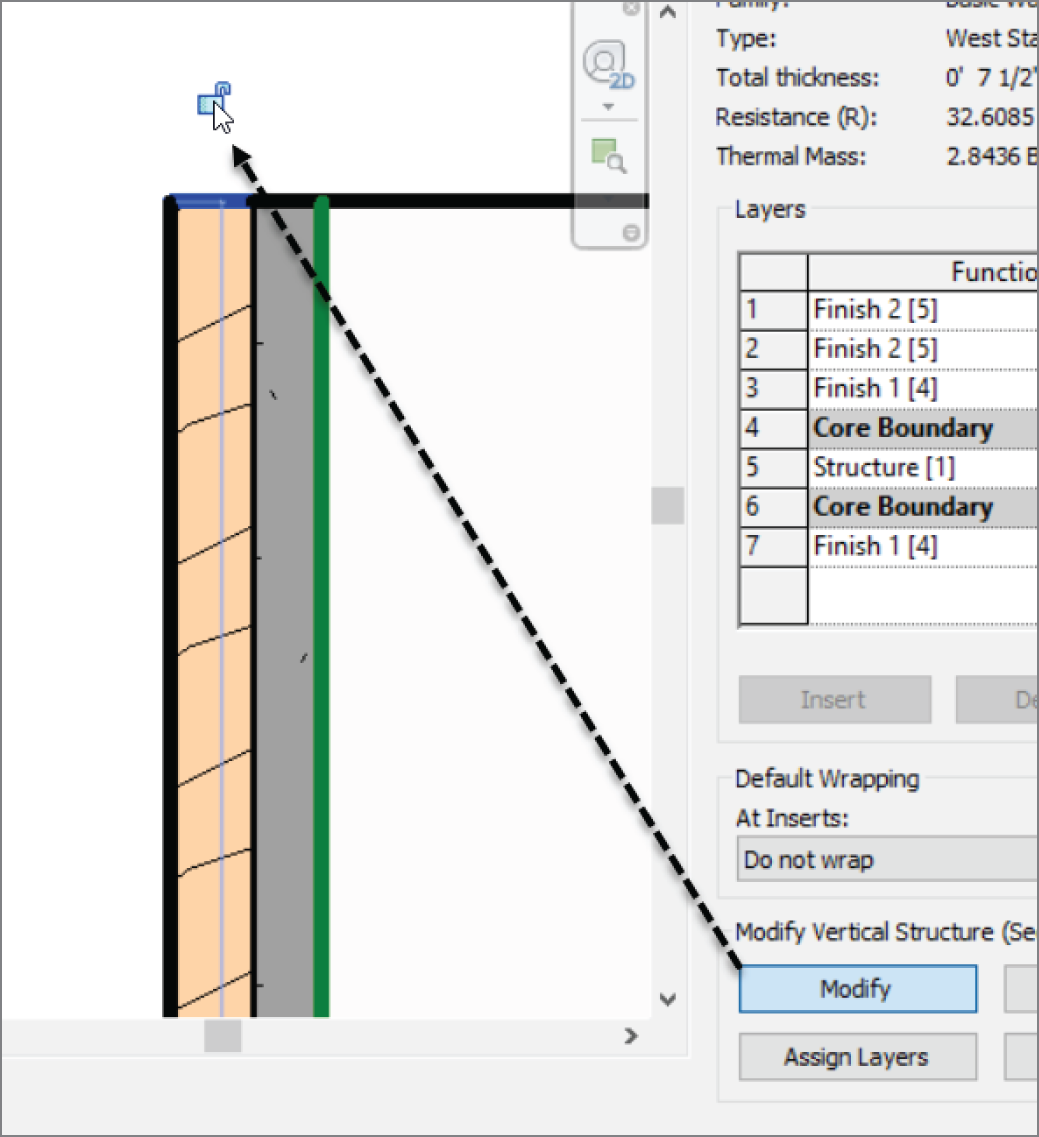
FIGURE 15.8 Unlocking the plywood to enable independent movement after the wall is placed into the model
- Click OK.
- Click OK one more time to get back to the model.
- Press Esc.
- Save the model.
By unlocking the layer, you can move that layer up or down depending on what you need. Another good example of the usefulness of this functionality is when you need to slide a brick ledge down past a foundation.
Some people find splitting the regions in the Edit Assembly easy, whereas others consider it more difficult. I found the procedure difficult at first. If you're like me, this technique will require practice until you've done a few more walls. Don't worry—it gets easier as time passes.
Adding an automatic sweep along this wall would be nice. Come to think of it, a wood base and a chair rail would finish this wall perfectly.
Adding Wall Sweeps
The concept of adding a wall sweep is as close to actual construction as you can come without setting up a chop saw. That is because, when you want to add a specific profile to sweep along a wall, you need to go outside the model, find (or create) the profile, and then bring it into the model. This process is similar to ordering trim and installing it.
In the following procedure, you'll load a base and a chair rail trim into the model. You'll then include these items in the wall on which you've been working. Follow along:
- On the Insert tab, click the Load Family button.
- Go to the
Profilesdirectory, and then go toFinish Carpentry. - Load the files
Base 1.rfaandCasing Profile‐2.rfa. (Press Ctrl to select both files.) - On the Architecture tab, click the Wall button.
- Make sure the current wall is West Stairwell Support Wall.
- In the Properties dialog, click Edit Type.
- Click the Edit button in the Structure row.
- Click the Sweeps button, as shown in Figure 15.9.
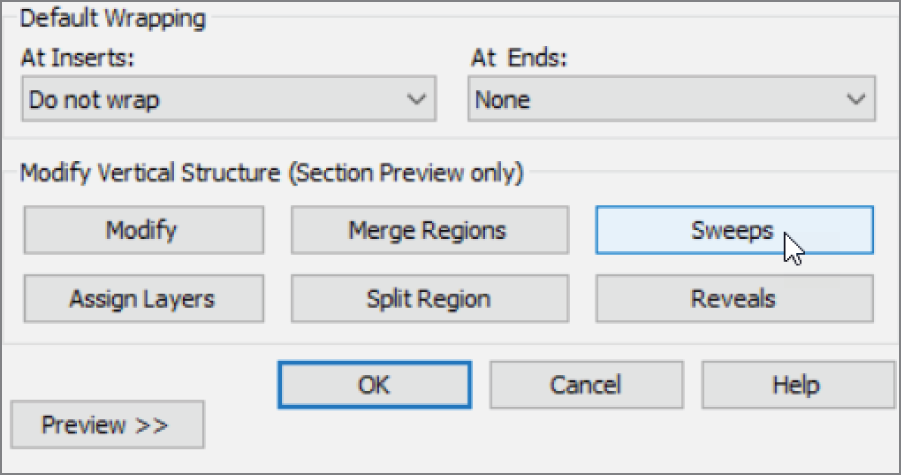
FIGURE 15.9 Adding a sweep to the wall
- In the Wall Sweeps dialog, click the Add button at the bottom of the dialog, as shown in Figure 15.10.
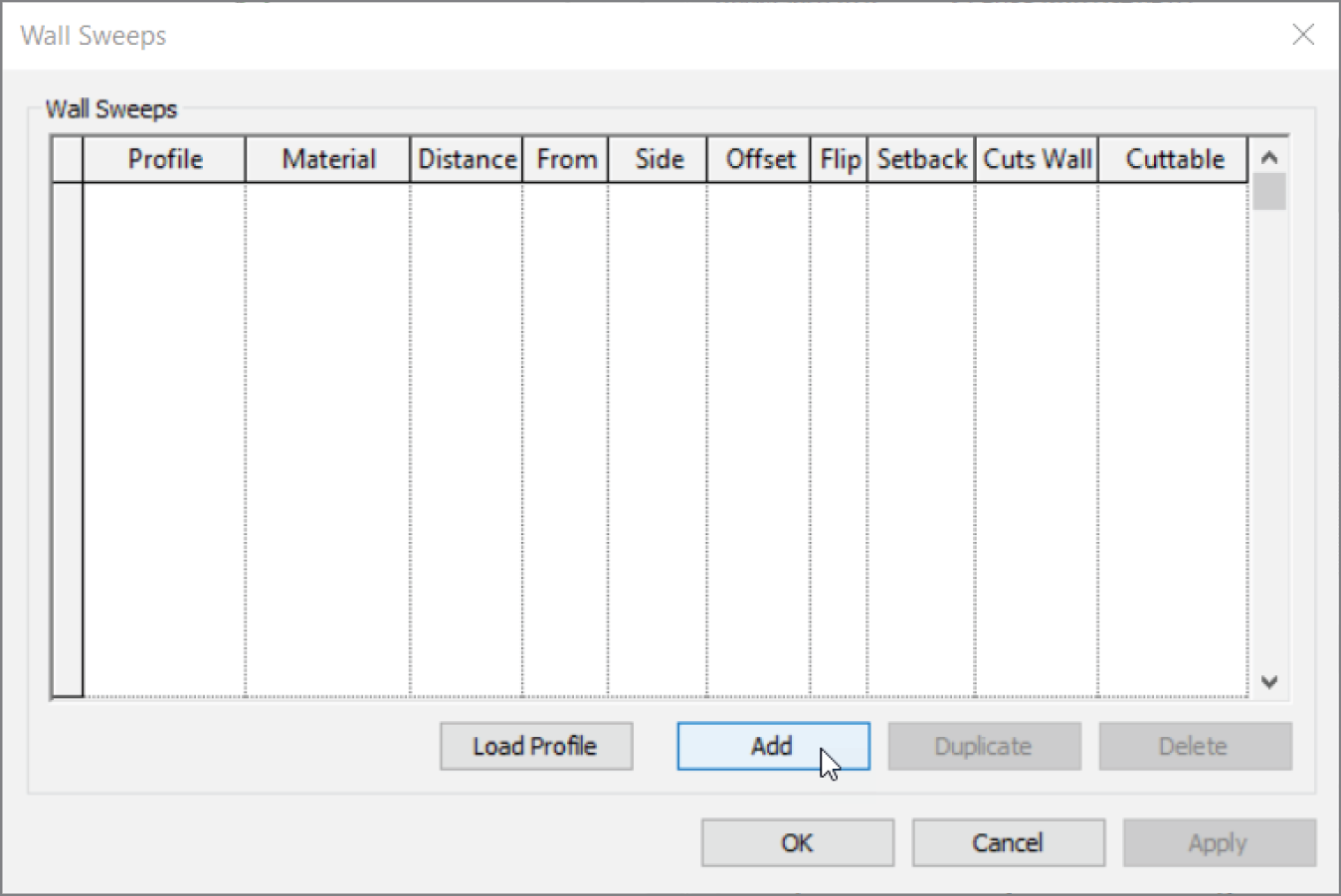
FIGURE 15.10 Adding a profile for the sweep
- Click the Profile drop‐down and select Base 1: 5 1/2″ × 5/8″ (140 mm × 16 mm).
- For Material, click where it says <By Category> click the browse button […].
- Find Mahogany, select it, but do not double‐click.
- At the bottom of the Material Browser, click Duplicate Select Material, as shown in Figure 15.11.
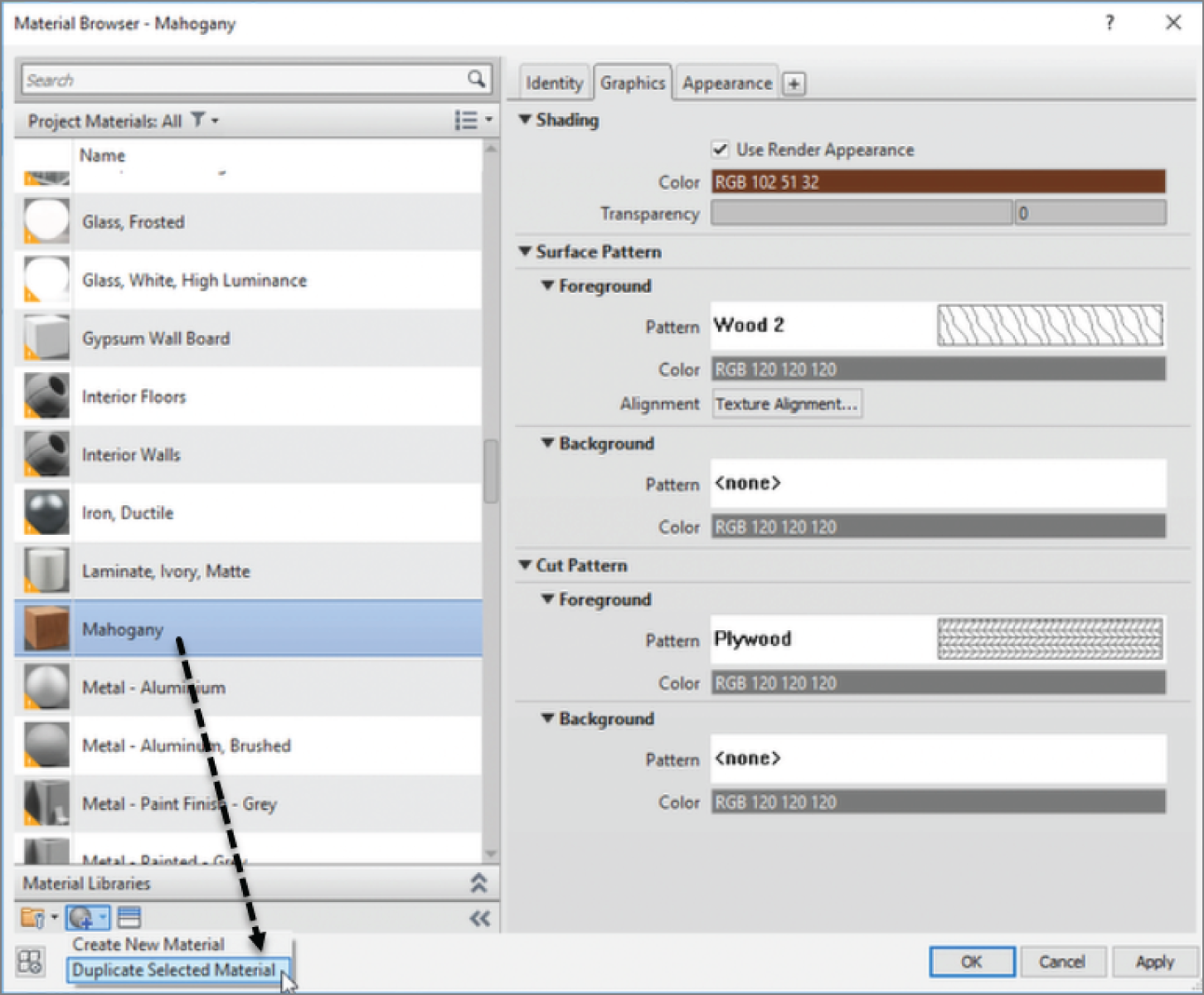
FIGURE 15.11 Duplicating the material
- Rename the new material to Mahogany Solid (the other one was veneered plywood—that is why we are doing this).
- For Cut Pattern: Foreground, select Wood 1, as shown in Figure 15.12.
- Click OK.
- Click OK again.
- In the Sweeps dialog, make sure your distance is 0′‐0″ from bottom and that it is set to Exterior, as shown in Figure 15.13.
- Click the Add button again.
- For the profile, choose Casing Profile‐2: 5 1/2″ × 13/16″ (140 mm × 21 mm).
- Set Material to Mahogany Solid.
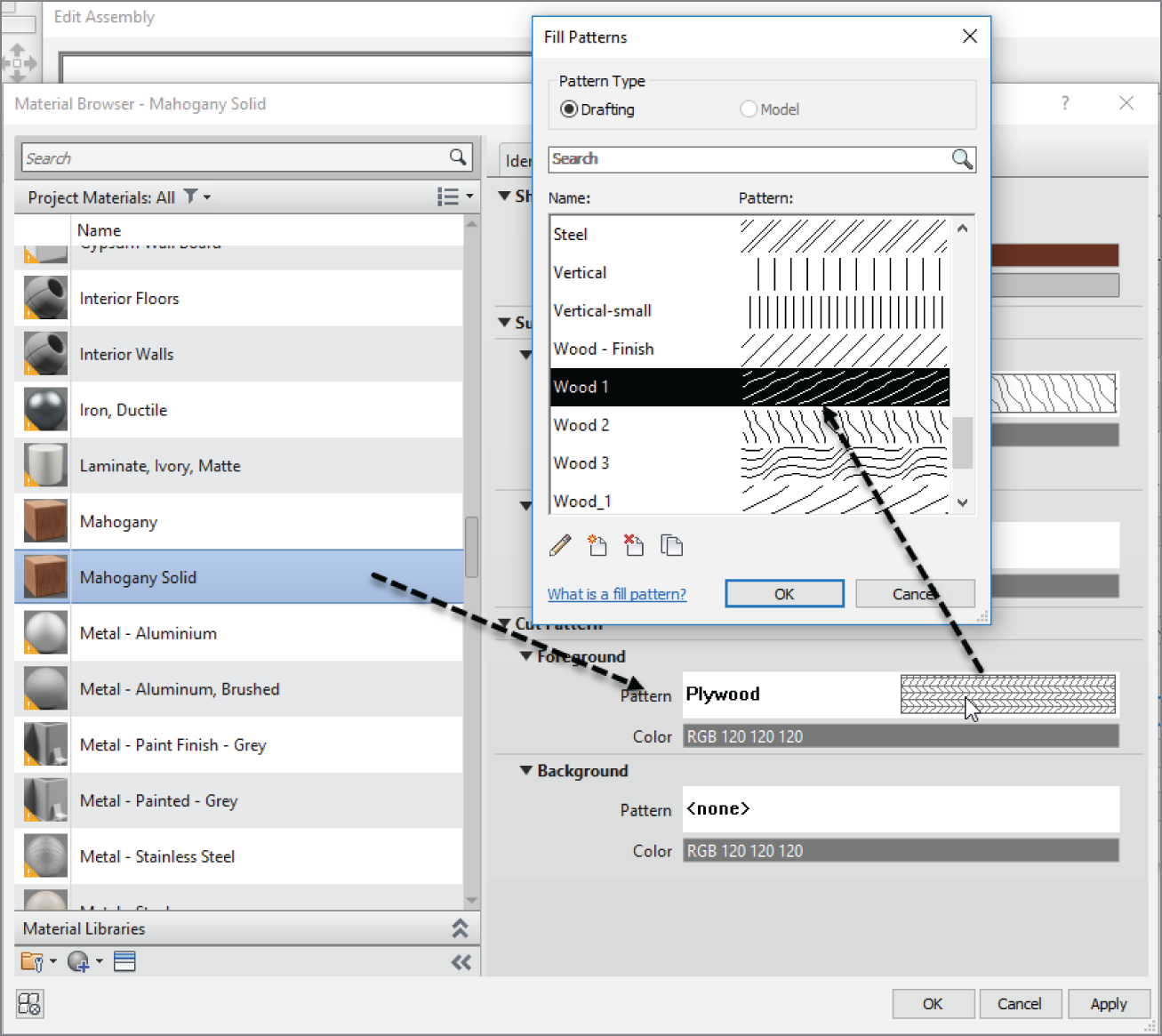
FIGURE 15.12 Adding a solid hatch pattern

FIGURE 15.13 The base applied to the wall
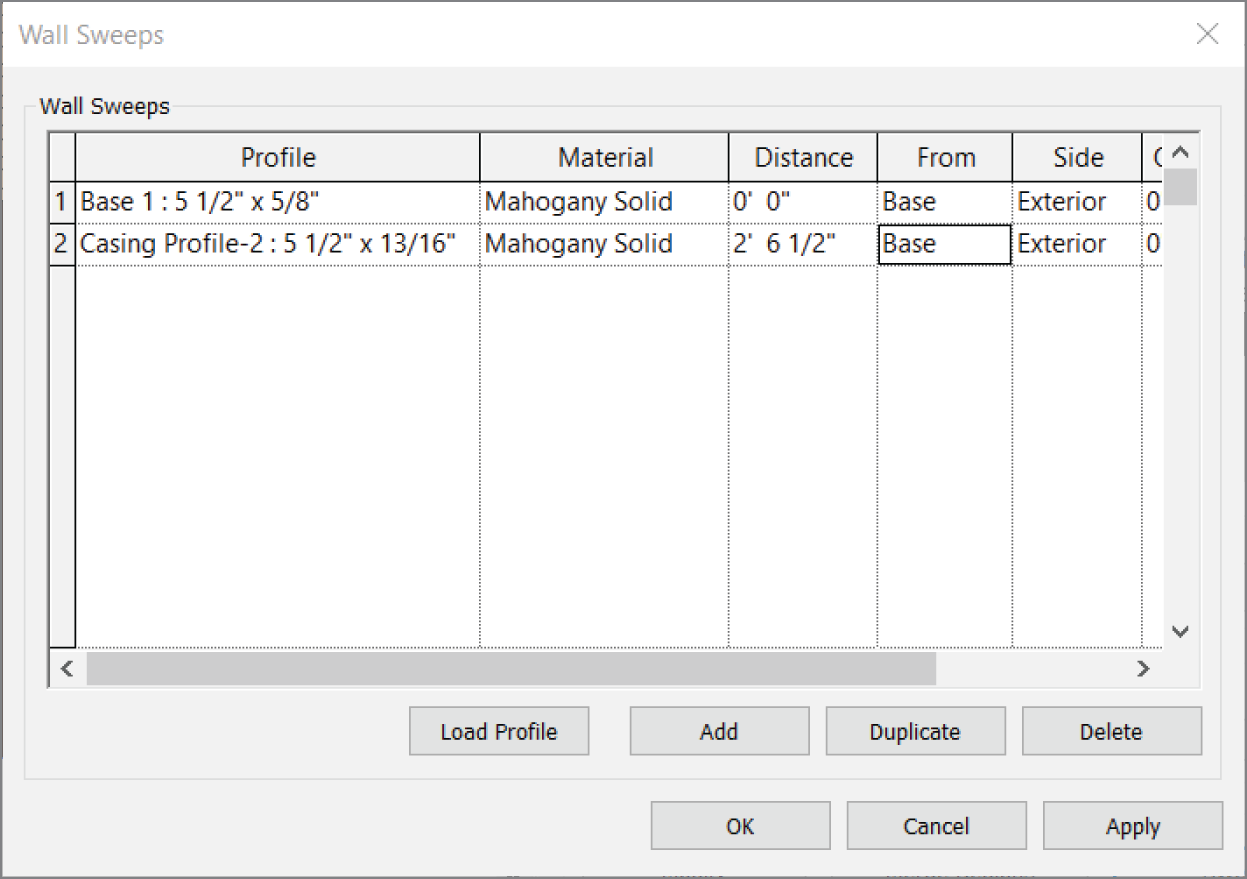
FIGURE 15.14 The chair rail applied to the wall
- Set Distance 2′–6 1/2″ (775 mm) from the base (see Figure 15.14).
- Click OK and zoom in on the wall where the sweeps are located so that you can confirm they're placed as expected.
- Click OK again.
- Click OK one more time to get back to the model.
- In the Project Browser, go to Level 3.
- In the Properties panel, make sure Base Level is set to Level 1 and Base Offset is set to 0′–0″.
- In the Options bar, set Height to Level 4, as shown in Figure 15.15.
- Set Location Line to Finish Face: Exterior, and make sure the Chain option is on.
- Draw the wall by snapping to the inside of the stringers, as shown in Figure 15.15. You want to go in a clockwise direction, so start with the eastern part of the staircase, marked 1 in Figure 15.15.
- In the Geometry panel on the Modify | Place Wall tab, click the Wall Joins button.

FIGURE 15.15 Placing the wall clockwise in the model
- Using the Wall Joins tool, go to each wall corner and make the join Mitered. See Figure 15.16.
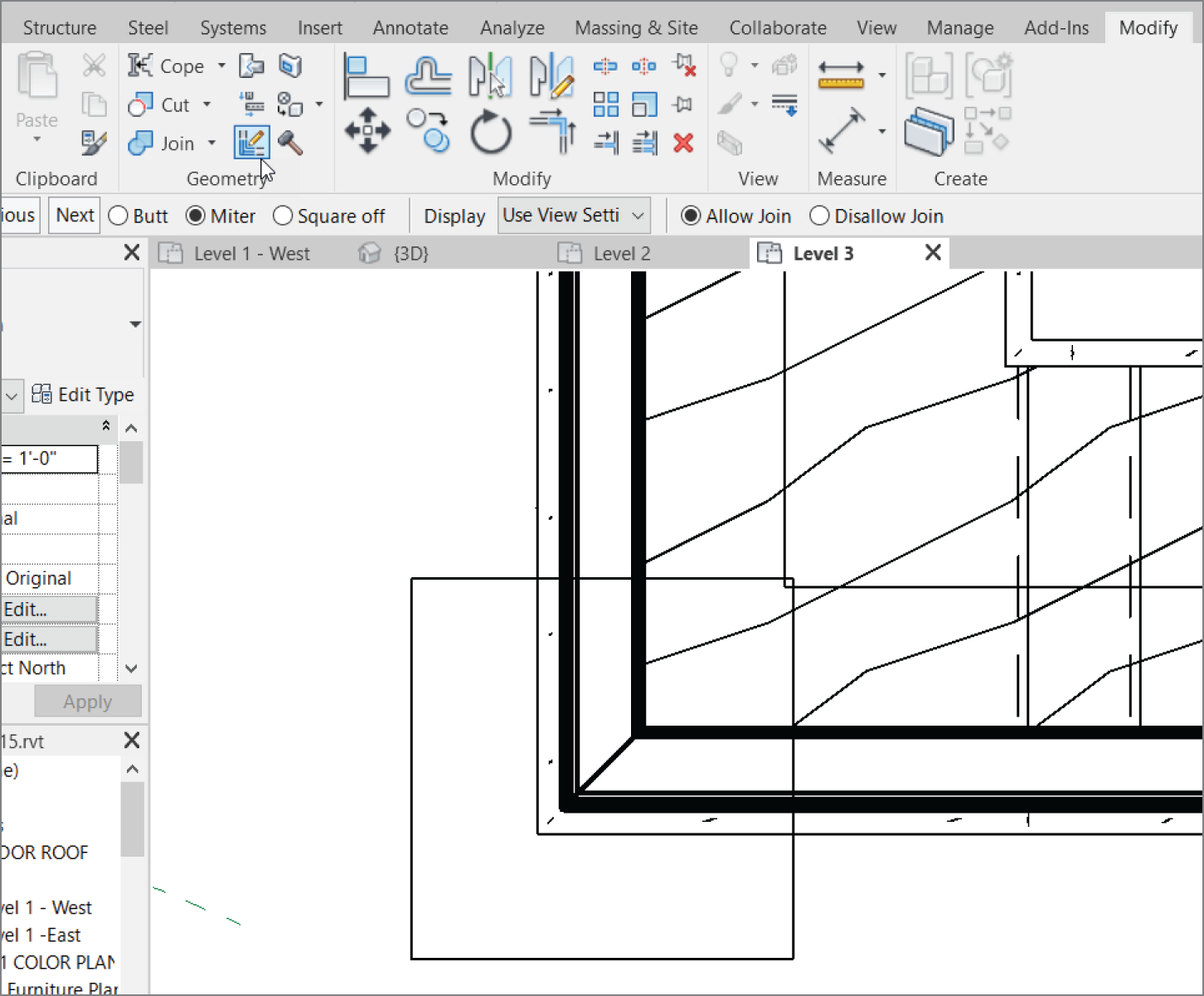
FIGURE 15.16 Placing the wall clockwise in the model
The wall has been added to the model. Because you're placing it underneath a staircase, there will be issues with the wall's profile. This brings us to the next section of this chapter, which guides you through modifying a wall's shape after it has been placed into the model.
Modifying a Wall's Profile in Place
Although we touched on modifying a wall profile back in Chapter 2, “Creating a Model,” in this section we'll take this technique to the next level. You can make a wall conform to any odd geometric shape you wish if you follow a few simple rules and procedures.

FIGURE 15.17 Placing an interior elevation
Let's edit the profile of the new walls to conform to the profile of the stairs. Follow these steps:
- Go to Level 1.
- On the View tab, click the Elevation button.
- Place an interior elevation, as shown in Figure 15.17.
- Open the elevation.
- Select the wall, as shown in Figure 15.18.
- On the Mode tab, click Edit Profile (see Figure 15.18).

FIGURE 15.18 Selecting the wall to be modified and clicking the Edit Profile button
- In the Draw panel, click the Pick Lines icon.
- Pick the underside of the stairs. Follow the profile exactly.
- Delete the existing top magenta line and the existing left magenta line by selecting them and pressing the Delete key. All you should have left is the profile shown in Figure 15.19.
- Use the Trim/Extend Single Element command to clean up all the corners. Revit won't allow you to continue if you don't. See Figure 5.19.
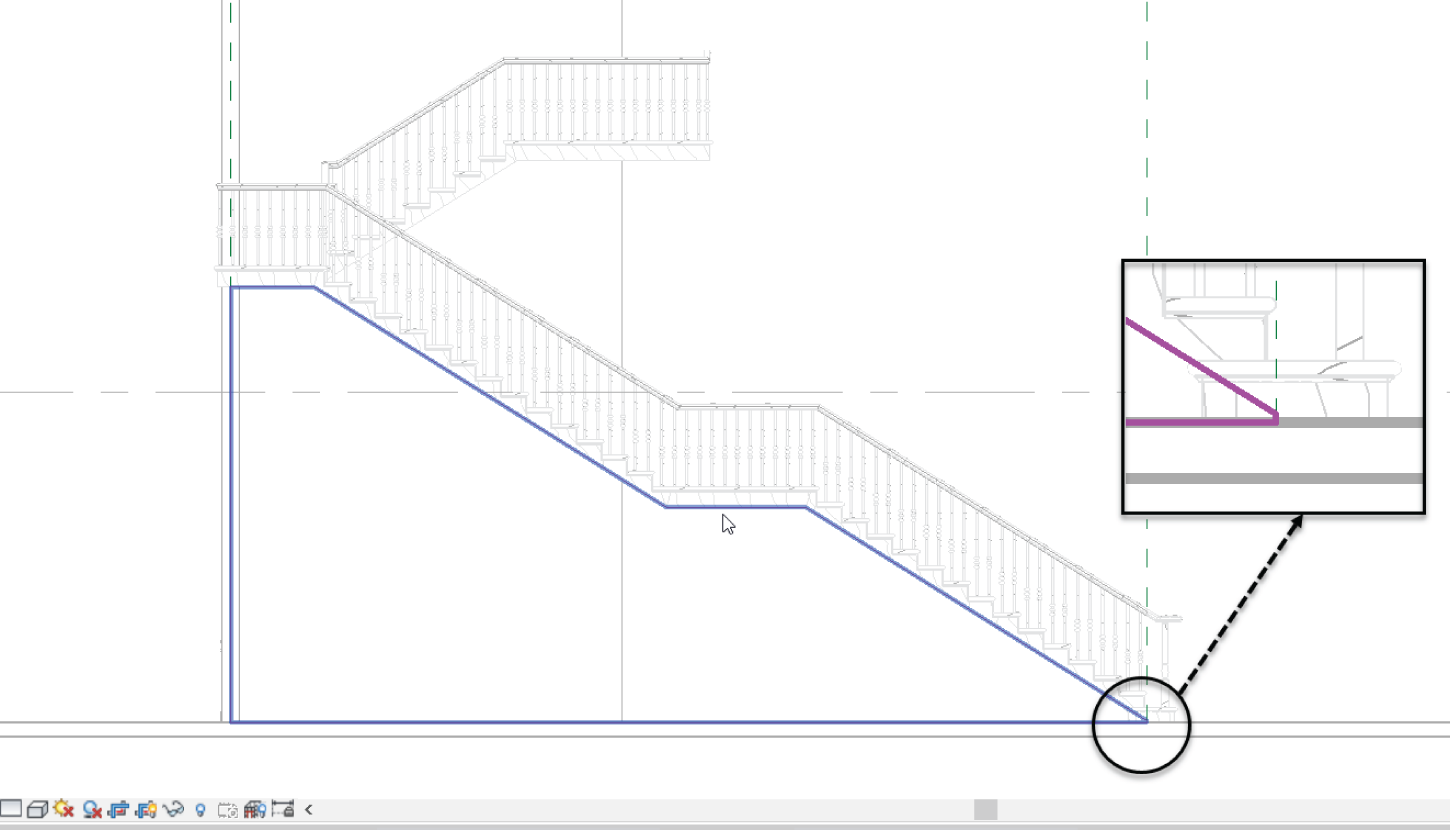
FIGURE 15.19 Cleaning up the lines so that they form a continuous loop
- Click Finish Edit Mode. Your wall is trimmed to the underside of the stairs. See Figure 15.20.

FIGURE 15.20 Looking really good!
- Repeat the procedure for each wall under the stairs. Remember to add elevations for each. Your finished walls should look like Figure 15.21.
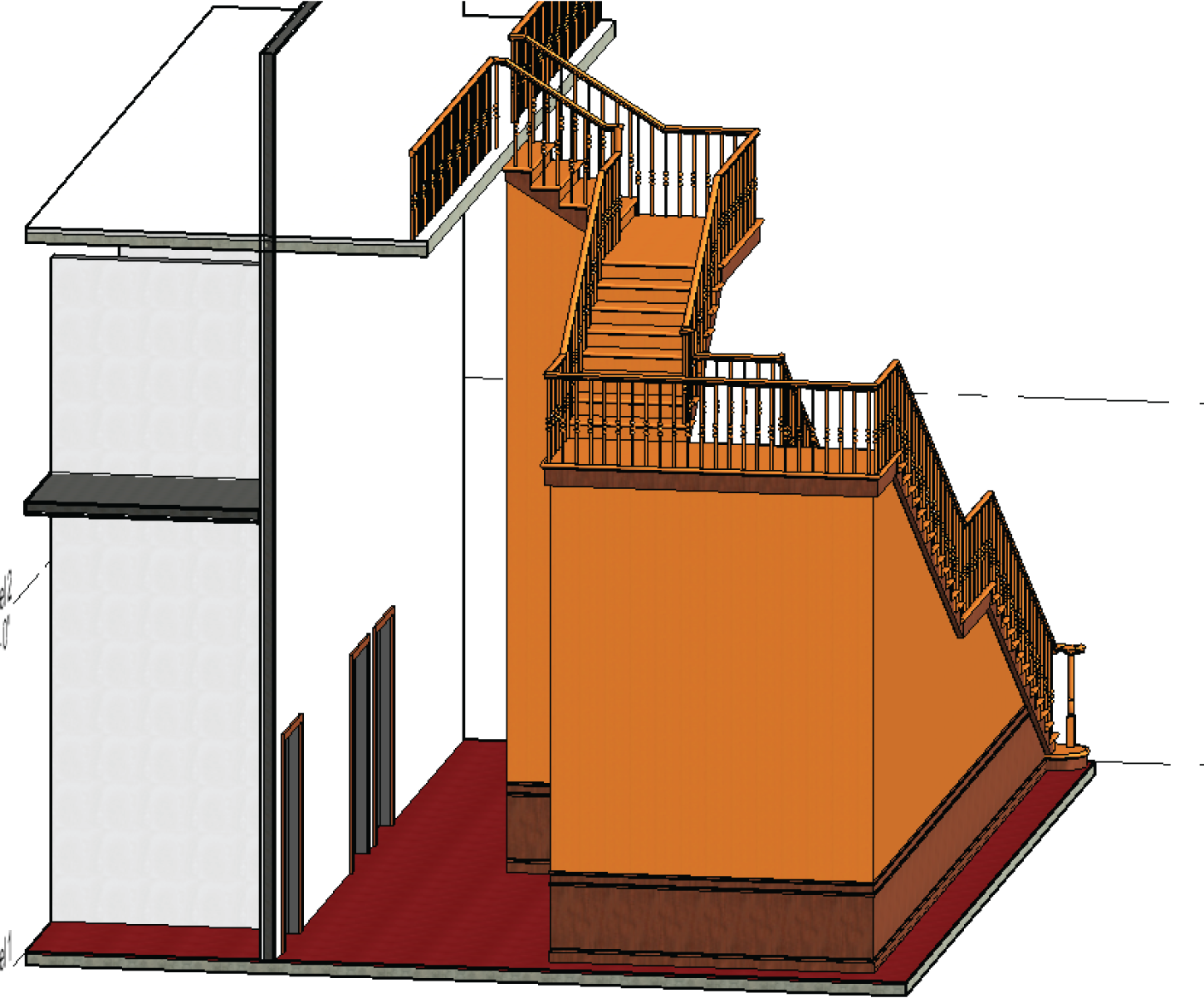
FIGURE 15.21 The finished walls should follow the profile of the stairs.
Now that you can create a compound wall and modify it to fit in an odd place, it's time to learn how to add some sweeps manually.
Manually Adding Host Sweeps
The problem with the wall scenario that you created in the previous procedure is that you have only horizontal wall sweeps. Suppose you need some vertical wall sweeps? This is where host sweeps come into play.
A host sweep is exactly like the sweeps you just added to the wall's properties, but by adding a host sweep, you can add sweeps manually. Next, you'll configure and add a host sweep to the model:
- Go to the elevation shown in Figure 15.22 (the first one you placed, looking at the stairs).
- On the Architecture tab, click the down arrow on the Wall button, and select Wall Sweep (see Figure 15.22).
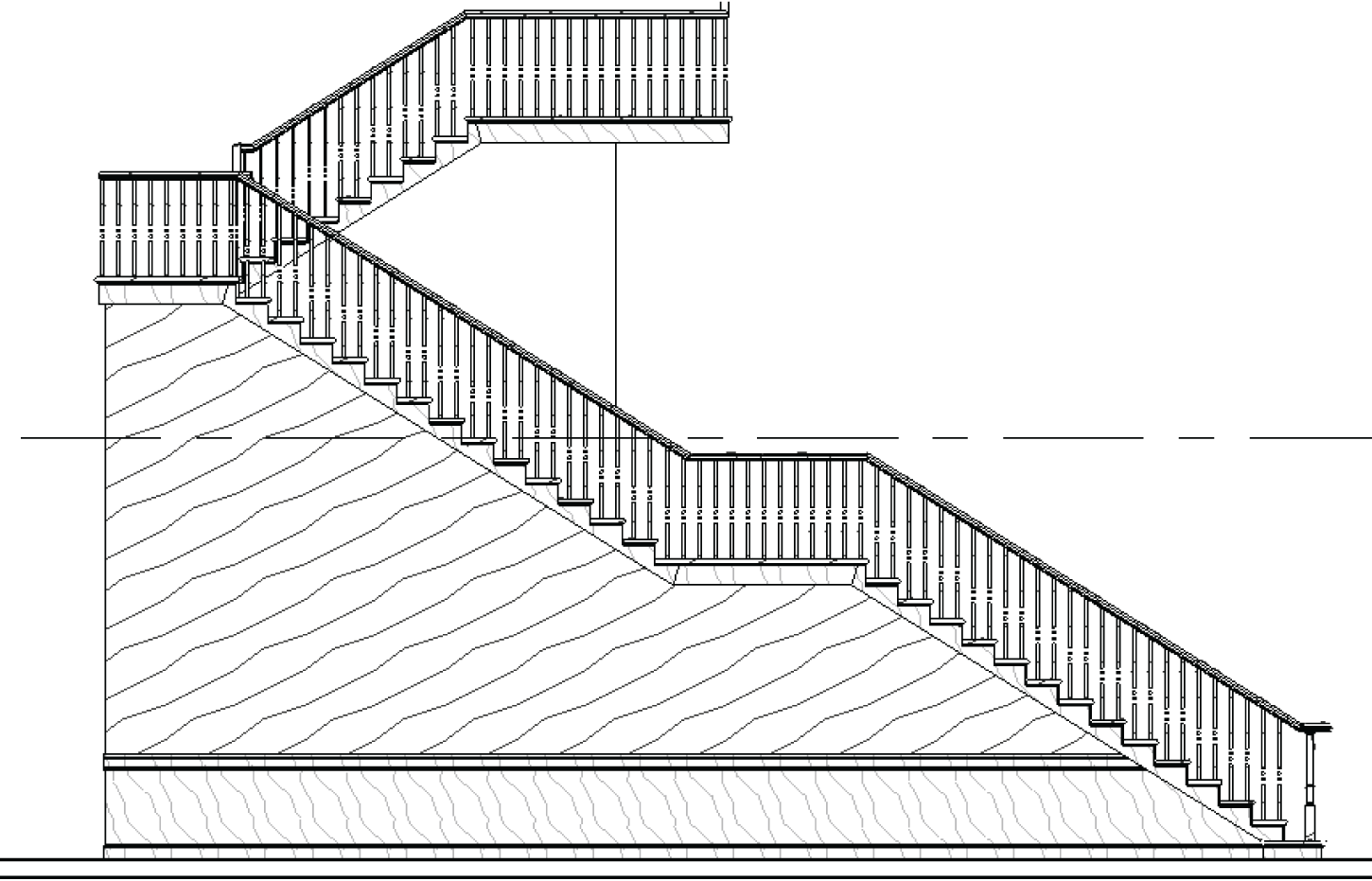
FIGURE 15.22 Choosing the Wall Sweep command
- In the Properties dialog, click Edit Type.
- Click Duplicate.
- Call the new sweep Chair Rail Sweep. Click OK.
- For the profile, choose Casing Profile‐2: 5 1/2″ × 13/16″ (140 mm × 21 mm) from the list.
- For Material, choose Mahogany Solid. See Figure 15.23.
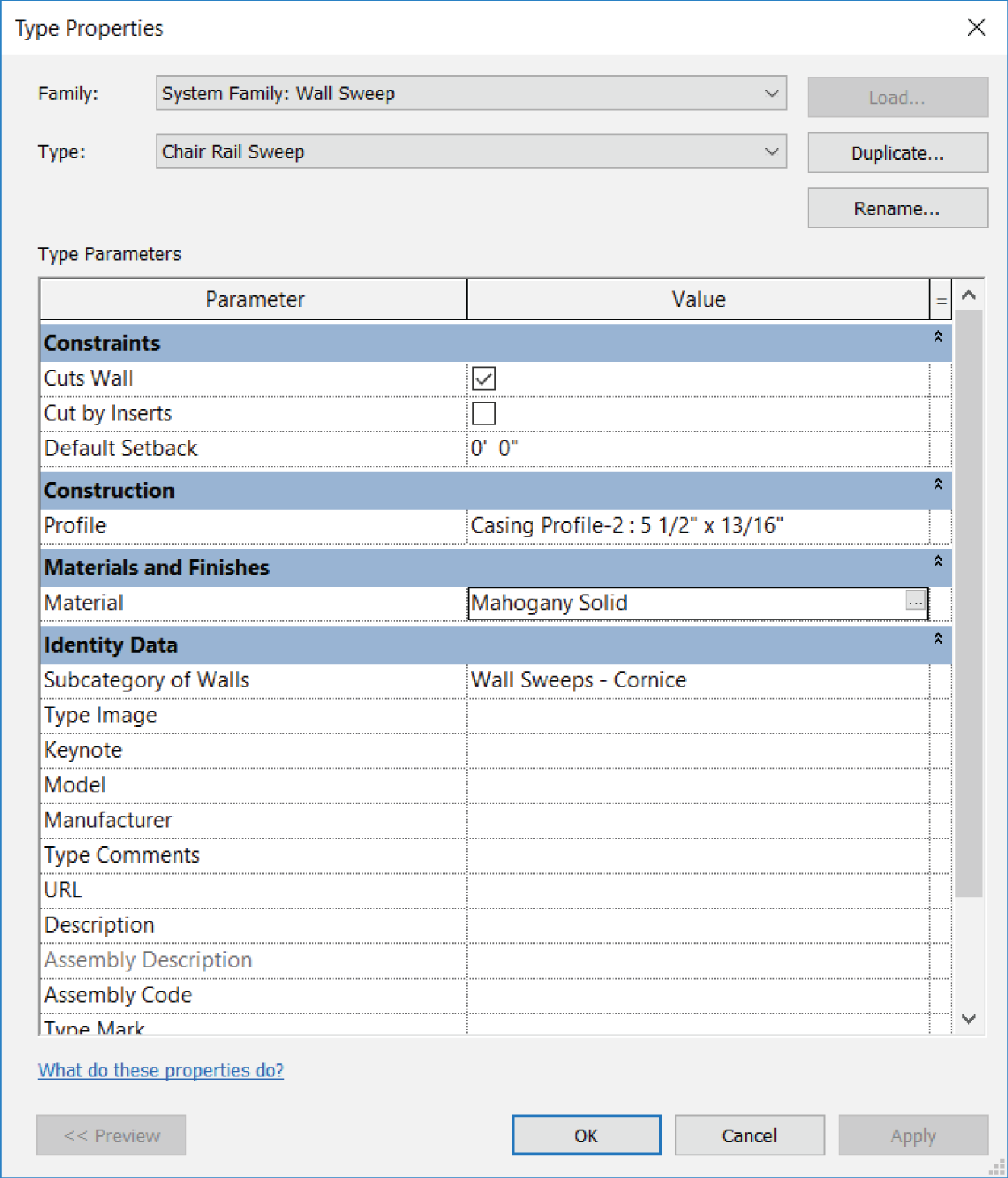
FIGURE 15.23 Configuring the sweep
- Click OK.
- On the Modify | Place Wall Sweep tab, click Vertical in the Placement panel (see Figure 15.24).
- Make sure your Chair Rail Sweep is current in the Type Selector menu.
- Pick the place shown in Figure 15.24.

FIGURE 15.24 Adding the profile to the wall
- Click the Restart Sweep button (next to the Vertical button in the Placement panel).
- After the trim is placed, press Esc (See Figure 15.25 for the proper placement of the vertical trim).

FIGURE 15.25 Placing the sweep on the corner
- Select the vertical trim. Notice the grips on the top and the bottom. Pick the bottom grip and drag it up to meet the top chair rail, as shown in Figure 15.26.
- Add another sweep about 3′ (900 mm) to the left of the first sweep.
- When the sweep is in, select it. A temporary dimension appears. Change the dimension to 3′–0″ (900 mm).
- Drag the bottom up.
- Repeat the procedure so that your elevation looks like Figure 15.27.
- Add vertical rails at around 3′–0″ (900 mm) to the other walls as well. Your walls should look like Figure 15.28.
You can now make modifications to a simple wall in any direction. You have experience adding sweeps to the wall's composition, and you can add sweeps freehand when you need to.
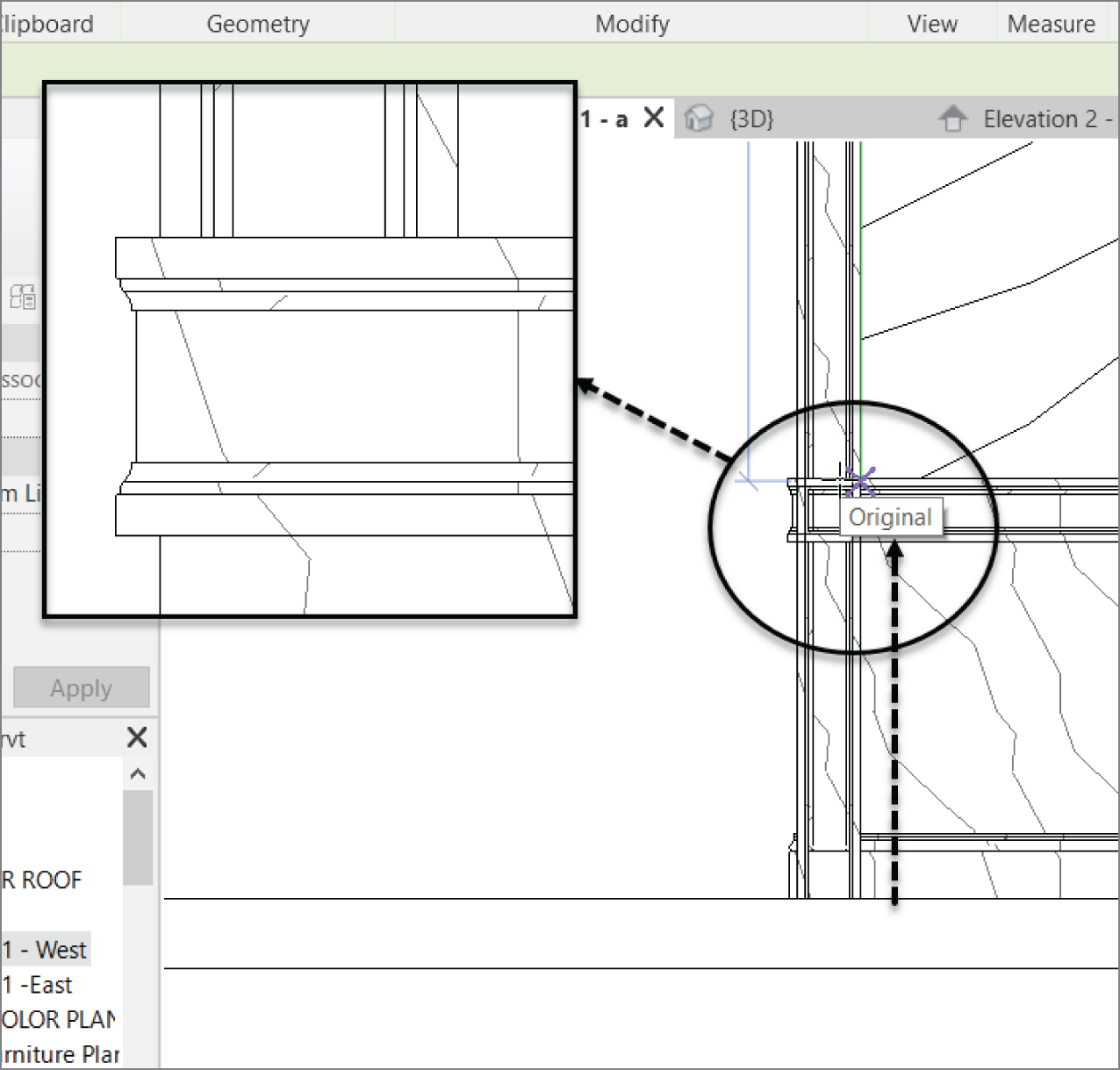
FIGURE 15.26 Dragging the sweep up to the chair rail
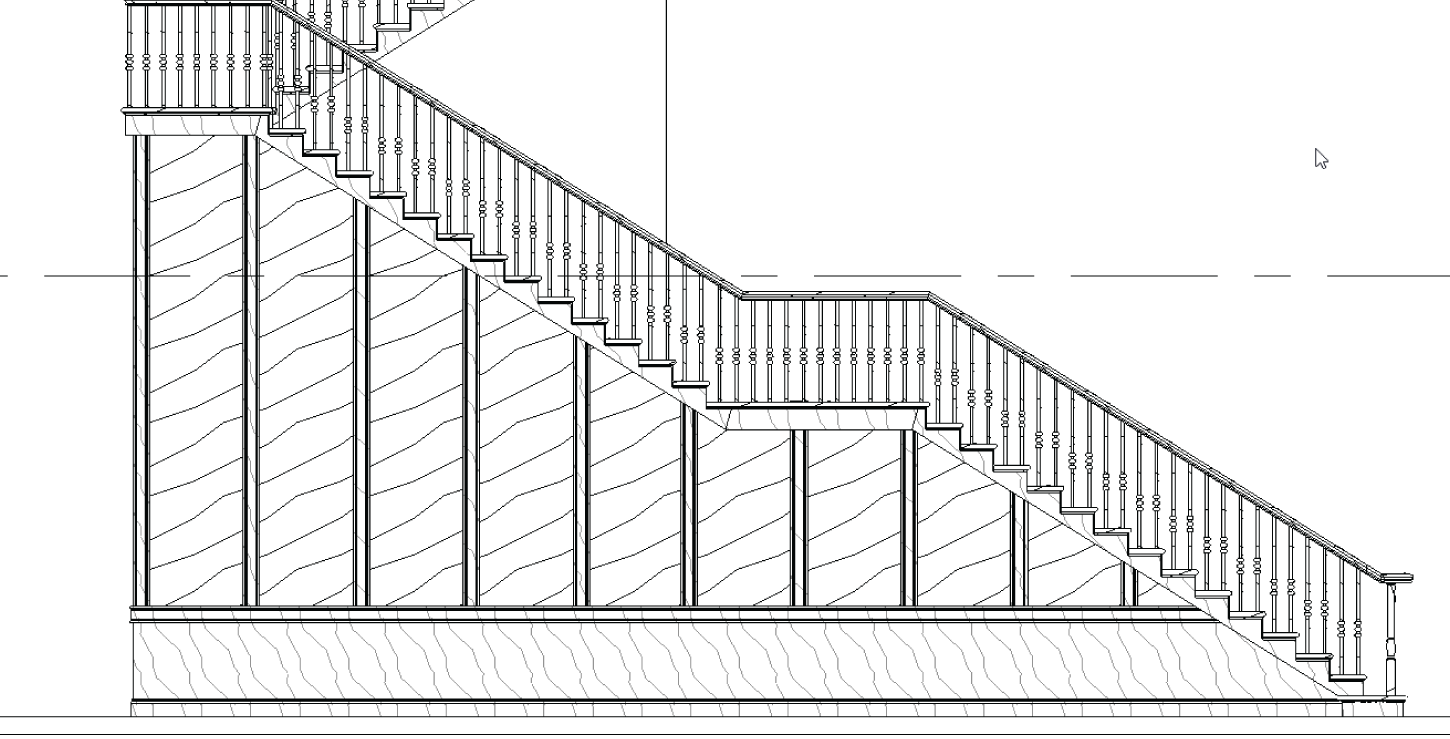
FIGURE 15.27 The finished south wall of the stairs
One other type of wall that we should cover before we get to curtain walls is a stacked wall. When you need a compound wall, the outside face must always be in alignment. When you run into this situation, you have to construct an entirely new wall.

FIGURE 15.28 The final walls with the sweeps added
Creating Stacked Walls
A stacked wall, simply put, is a wall created by stacking two premade walls together. You can't have a stacked wall without at least two basic walls that you can join. The good thing about stacked walls is that you can stack as many as you like. I recommend that you use some restraint, though—these walls can use up memory if you get too carried away.
The objective of the following procedure is to join three basic walls together to create one stacked wall. The result will create an alcove for architectural casework. Follow these steps:
- Go to Level 1 West and, on the Architecture tab, click the Wall button.
- In the Type Selector menu in the Properties dialog, select Basic Wall: Interior 6 1/8″ (156 mm) Partition (2‐Hr).
- Click Edit Type.
- Click Duplicate.
- Call the wall 18″ (450 mm) Soffit Wall and click OK.
- Change Wrapping At Inserts and Wrapping At Ends to Interior.
- Click the Edit button in the Structure row.
- In the Layers area, click 3 Core Boundary (Layers Above Wrap), and click Insert.
- Set Function to Thermal/Air Layer [3].
- Set Material to Air Barrier ‐ Air Infiltration Barrier.
- Set Thickness to 8 1/4″ (210 mm).
- Click Insert (to insert another layer above).
- Set Function to Finish 1 [4].
- Set Material to Metal Stud Layer.
- Set Thickness to 3 5/8″ (92 mm) (see Figure 15.29).

FIGURE 15.29 The wall layers
- Click OK twice.
- To the left of the Ribbon, click the Modify button (doing so clears the Wall command).
Let's begin building the stacked wall. Because you have two walls with which to work, you can specify them in the Edit Assembly dialog for the stacked wall.
The next procedure joins the 18″ (450 mm) soffit wall with the 6 1/8″ (156 mm) partition wall:
- On the Architecture tab, click the Wall button if it isn't already running.
- Scroll down the Type Selector until you arrive at Stacked Wall: Exterior – Brick Over CMU w Metal Stud and select it.
- Click Edit Type.
- Click Duplicate.
- Call the new wall Recessed Wall and click OK.
- Click Edit in the Structure row.
- For Offset, select Finish Face: Interior.
- In the Types area, change Wall 1 to 18″ (450 mm) Soffit Wall.
- Change Wall 2 to Interior ‐ 6 1/8″ (156 mm) Partition (2‐Hr).
- Change Height to 5′–6″ (1650 mm).
- Insert a wall below the Interior ‐ 6 1/8″ (156 mm) Partition (2‐Hr) wall.
- Change the third wall to 18″ (450 mm) Soffit Wall.
- Change the height to 3′–0″ (900 mm).
- At the top of the dialog, change Sample Height to 10′–0″ (3000 mm) (see Figure 15.30).
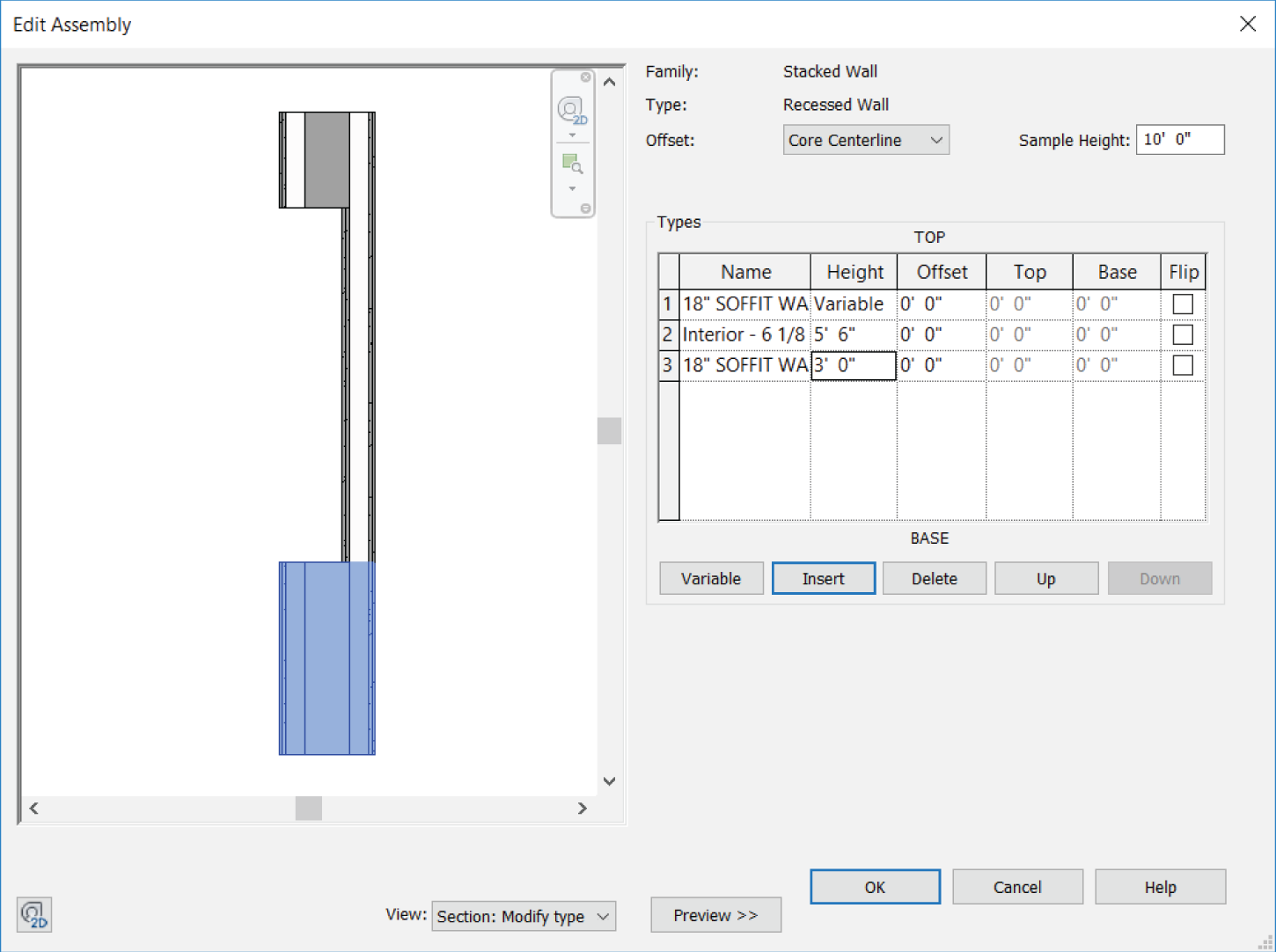
FIGURE 15.30 Creating the stacked wall
- Click the Preview button.
- Click OK twice.
- Draw the wall in the west wing, as shown in Figure 15.31. (If you wish, you can create an elevation or cut a section through the wall.)

FIGURE 15.31 Adding the new stacked wall to the model
With the concept of stacked walls behind us, we can move into the crazy world of curtain walls. Although curtain walls are complex in nature, Revit handles them quite well.
Creating Curtain Walls
The topic of curtain walls brings us away from the conventional mindset of walls. Curtain walls are placed into the model the same way as conventional walls, but curtain walls have many more restrictions and element properties that we should examine before you go throwing one into your model.
With that said, curtain walls also provide the most dramatic effect on your building. As this section will explain in detail, a curtain wall is not only composed of glass and aluminum extrusions but can also be constructed from building materials such as brick, concrete masonry unit (CMU), and wood. You can also predefine the materials and the spacing, or you can create them grid by grid, depending on your situation.
The first part of this section will focus on adding a predefined curtain system to the model.
Adding a Predefined Curtain Wall
The quickest way to model a curtain wall is to use one that has already been created for you. The out‐of‐the‐box curtain walls that are provided with Revit have enough instance and type parameters available to make the curtain wall conform to your needs for each situation.
In the next procedure, you'll add a predefined curtain‐wall system to the radial east entry wall. Follow these steps:
- In the Project Browser, open the Level 1 East plan view.
- Zoom in on the east entry.
- On the Architecture tab, click the Wall button.
- In the Type Selector, select Curtain Wall: Storefront.
- Click Edit Type.
- Click Duplicate.
- Call the new curtain wall East Entry and click OK.
- You can configure many parameters. Verify that Automatically Embed is selected. For Vertical Grid Pattern, change Spacing to 4′–0″ (1200 mm).
- Select Adjust For Mullion Size.
- For Horizontal Grid Pattern, change Layout to Maximum Spacing, and change the spacing to 4′–0″ (1200 mm).
- Click OK.
- In the Instance Properties dialog, change Base Offset to 3′–7″ (1075 mm).
- Set Top Constraint to Up To Level: Roof.
- Set Top Offset to ‐1′–0″ (that's minus 1′–0″) (‐300 mm). See Figure 15.32.

FIGURE 15.32 Picking the radial entry wall to add the curtain wall
- In the Draw panel, click the Pick Lines icon.
- Pick the radial entry wall, as shown in Figure 15.33. Make sure you're picking the wall centerline.
- Go to a 3D view. Your curtain wall should resemble Figure 15.34.

FIGURE 15.33 Picking the radial entry wall to add the curtain wall

FIGURE 15.34 The curtain wall in 3D
The ability to create an automatic curtain wall such as the radial one in the west entryway is quite an advantage when it comes to modeling a curtain system quickly. However, you won't always be presented with a perfectly square, vertical shape. This is where creating a blank curtain wall comes in handy. You can then add grids and mullions at spaces that are at odd intervals.
Adding a Blank Curtain Wall
A blank curtain wall is nothing but a giant chunk of glass. By adding a blank curtain wall, you tell Revit, “Don't bother spacing the panels—I'll do it myself.”
Let's create a blank curtain wall and add it to the model. You'll then go to an elevation and edit the profile of the panel. Follow along:
- In the Project Browser, open the Level 1 West view.
- In the Work Plane panel of the Architecture tab, click Ref Plane, and then click Pick Lines in the Draw panel.
- Offset a reference plane 2′–0″ (600 mm) from the face of brick, as shown in Figure 15.35.
- On the Architecture tab, click the Wall button.

FIGURE 15.35 Offsetting two reference planes 2′–0″ (600 mm) from the face of the brick
- In the Type Selector, pick Curtain Wall: Curtain Wall 1 from the list.
- Click Edit Type.
- Click Duplicate.
- Call the new curtain system South West Entry and click OK.
- Select the Automatically Embed check box.
- Click OK.
- For Base Offset, change the value to 0′–0″.
- For Top Constraint, set the value to Up To Level: Level 5.
- For Top Offset, change the value to 0′–0″.
- Draw the wall at the centerline of the wall between each reference plane, as shown in Figure 15.36. Note that if you draw from right to left, the exterior face of the new wall will be to the inside.
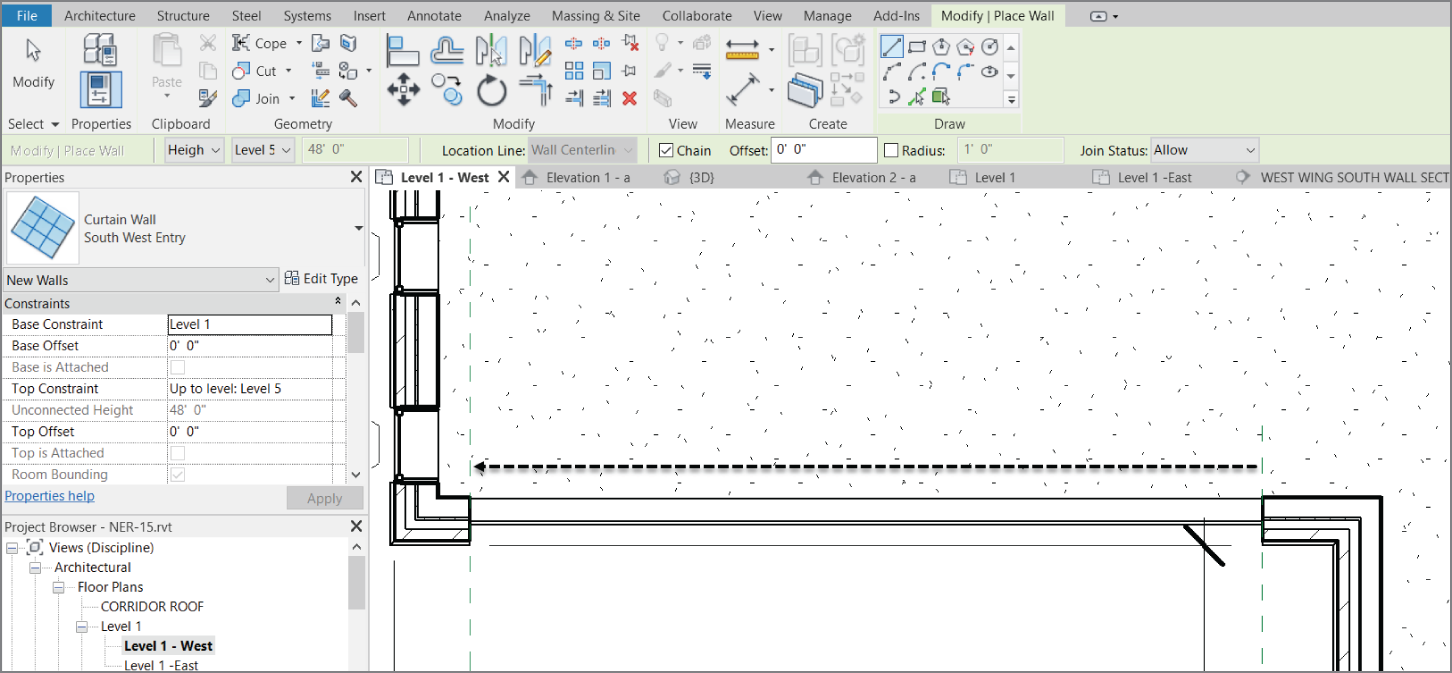
FIGURE 15.36 Drawing the curtain wall at the centerline of the wall between the two reference planes
- In the Project Browser, open South Entry Elevation.
- In the South Entry Elevation, change Visual Style to Shaded (so that you can see the glass wall better).
Now that you have drawn the wall and are looking at the elevation, you can begin to alter the profile and add some curtain grids of your own. To edit the curtain profile, follow these steps:
- Select the curtain wall.
- On the Modify | Walls tab, click Edit Profile.
- In the Draw panel, click Pick Lines.
- Using the Options bar, offset the roof down 2′–0″ (600 mm), and trim the edges of the curtain wall to the offset line.
- Delete the horizontal magenta line that is now floating.
- Click Finish Edit Mode. Your curtain wall's profile should resemble Figure 15.37.

FIGURE 15.37 The complete curtain‐wall profile
With the shape of the curtain wall finished, let's create some divisions along the vertical and horizontal plane of the wall. In Revit, these are called curtain grids.
Creating Curtain Grids
Because all you have is a single pane of glass, you need to dice it up. In this situation, you can begin dividing the glass panel by using the Curtain Grid command. When you've finished, you can add mullions, doors, and even materials to the panels.
Begin by adding curtain grids to the glass panel:
- In the Build panel of the Architecture tab, click the Curtain Grid button, as shown in Figure 15.38.

FIGURE 15.38 Click the Curtain Grid button in the Build panel of the Architecture tab.
- On the Modify | Place Curtain Grid tab, click the All Segments button, as shown in Figure 15.31.
- Move your cursor up the left side of the curtain wall and pick a horizontal point that is 8′–0″ (2400 mm) up from the base of the wall (see Figure 15.39).
- Press Esc twice.
- Select the horizontal grid.
- Click the Copy button in the Modify panel.
- Copy the grid up 4′–0″ (1200 mm).
- Copy the 4′ grid up 2′–0″ (600 mm).

FIGURE 15.39 Picking a point 8′–0″ (2400 mm) up from the base of the wall
- Repeat this pattern until you've reached the top of the wall (see Figure 15.40).
- Click the Curtain Grid button.
- Slide your cursor along the base of the panel (the grid is extended in a vertical direction).
- In the Placement panel, click the One Segment button.
- Pick the midpoint of the panel. (You should have segmented only the bottom panel.)
- Click Modify.
- Select the vertical grid.
- On the Modify toolbar, click the Move button.
- Move the grid to the left 3′–0″ (900 mm).
- Copy the grid to the right 6′–0″ (1600 mm). Your wall should now look like Figure 15.41.
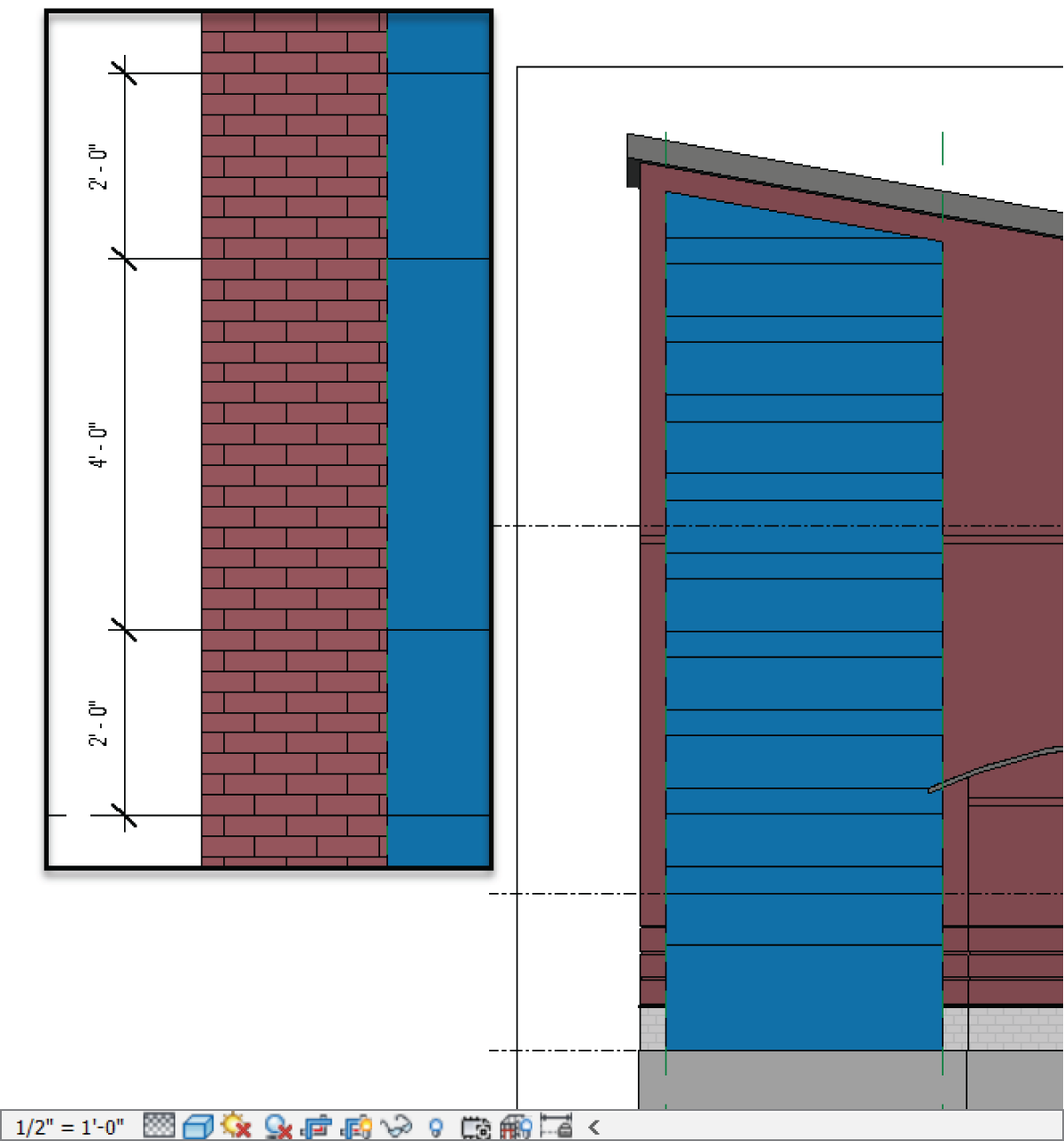
FIGURE 15.40 Copying the grids to form the custom curtain wall

FIGURE 15.41 Chopping up the panel
With the panel broken up, you can begin adding materials. One material you may not think of is an actual door! Yes, in Revit curtain walls, you add a door to a curtain panel as a material.
Adding Materials
In addition to doors, you can add to a curtain wall any material that is present in the model. You can even add separate wall systems.
In this procedure, you'll add a door to the curtain system. Then you'll add brick belts that fill the 2′–0″ (600 mm) sections. Follow these steps:
- On the Insert tab, click the Load Family button.
- Browse to
Doorsand open theDoor‐Curtain‐Wall‐Double‐Storefront.rfafile. - Zoom into the 6′ × 8′ (1800 mm × 2400 mm) panel.
- Hover your cursor at the top of the panel.
- Press the Tab key twice. When the panel is highlighted, pick it (see Figure 15.42).
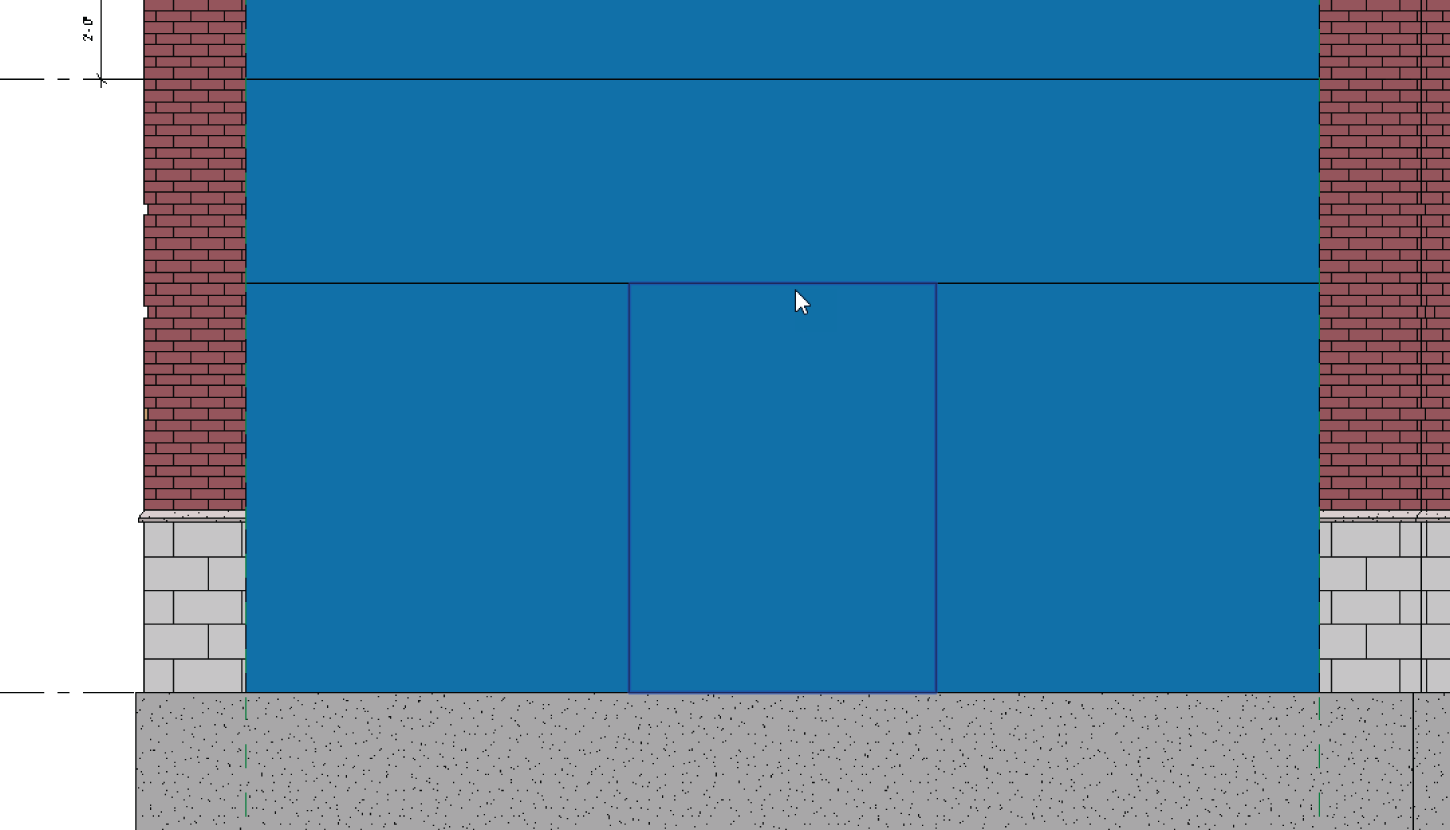
FIGURE 15.42 Selecting the 6′ × 8′ (1800 mm × 2400 mm) panel
- In the Type Selector, pick Door‐Curtain‐Wall‐Double‐Storefront. A door appears in the panel. See Figure 15.43.
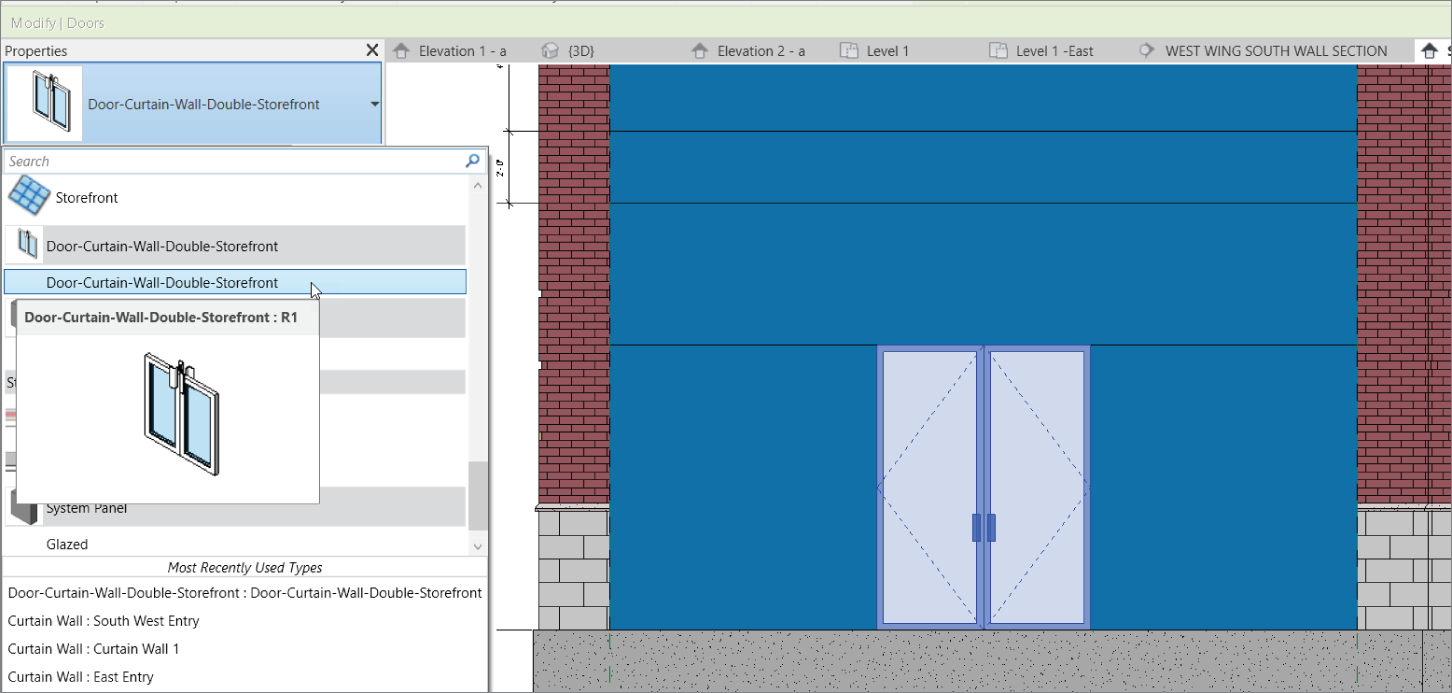
FIGURE 15.43 Adding the door
- Go to a 3D view.
- Select the 2′–0″ (600 mm) panel above the door by hovering your cursor over the panel and pressing Tab until it becomes highlighted.
- In the Type Selector, pick Exterior ‐ Brick On Mtl. Stud.
- Press Esc.
- Fill the rest of the 2′–0″ (600 mm) bands with the same Generic ‐ 12″ (300 mm) Masonry. See Figure 15.44.
With the panels in place, you can start filling in the mullions. This brings us to the next step: adding mullions to the grid.
Adding Mullions to the Grid
The next logical step is to create the mullions that will be attached to the grid you just added. Because you have a few areas where there shouldn't be mullions, the job becomes more tedious.
The next example could go one of two ways. One technique adds mullions piece by piece, and the other procedure lets you add mullions all at once and then delete the mullions you don't need. This procedure takes the latter approach; you'll add the mullions all at once and then remove the superfluous mullions:
- Go to the SOUTH ELEVATION ENTRY view.
- In the Build panel of the Architecture tab, click the Mullion button, as shown in Figure 15.45.
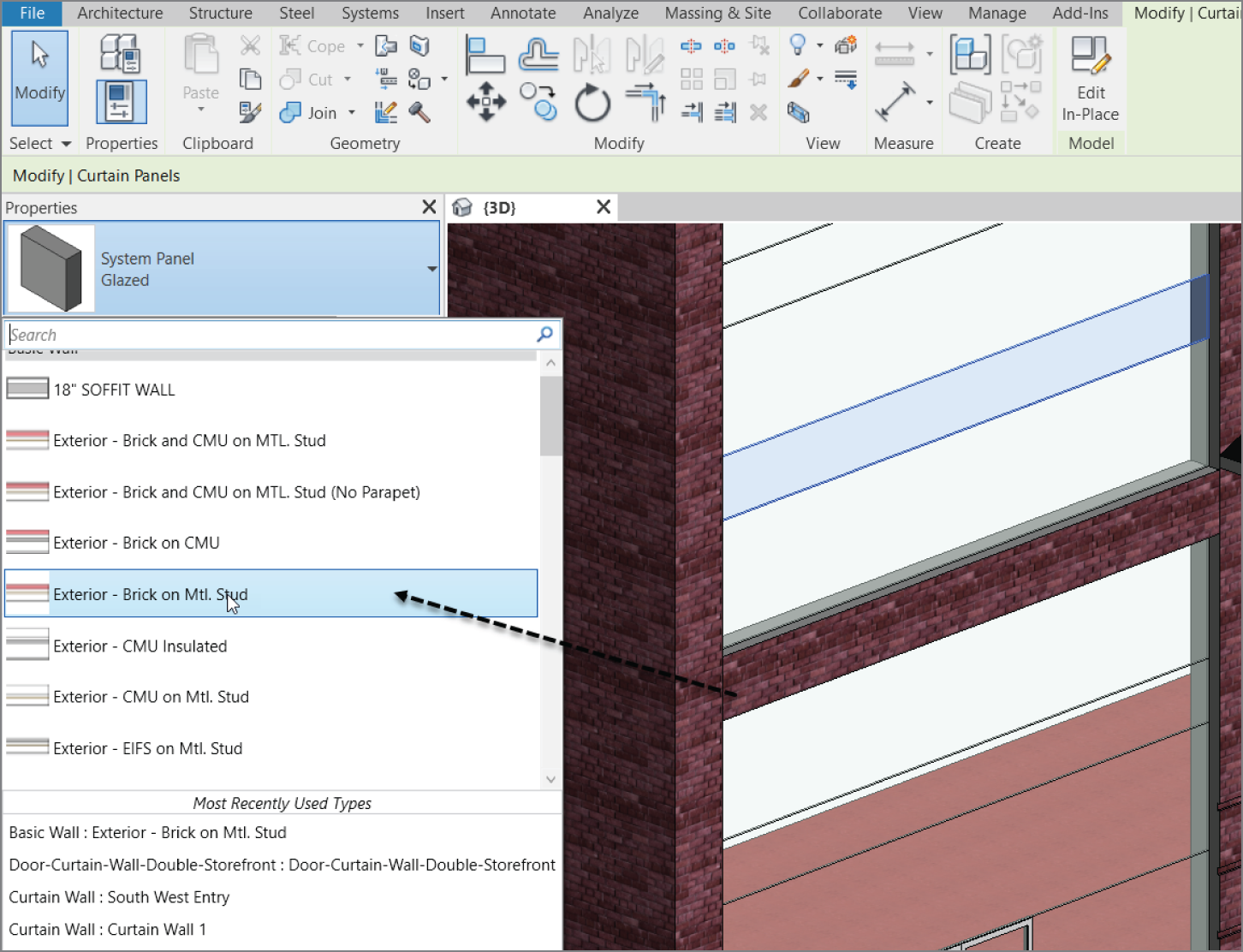
FIGURE 15.44 Adding the brick rows
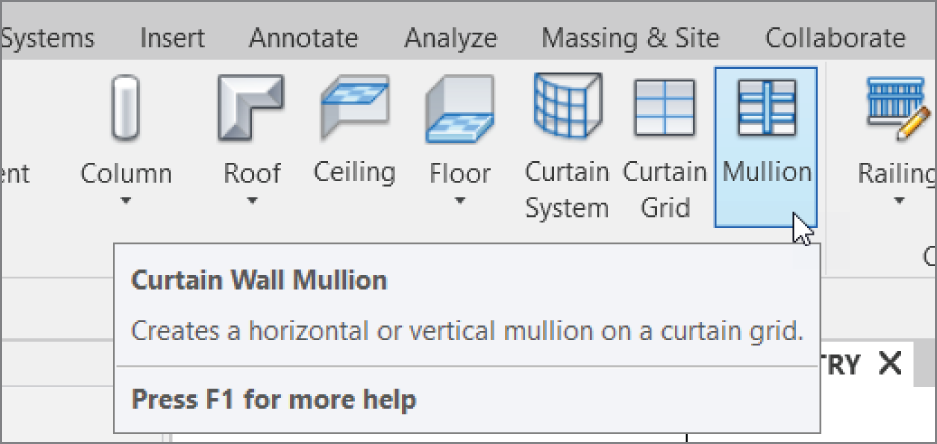
FIGURE 15.45 Click the Mullion button on the Architecture tab.
- In the Properties dialog, choose Rectangular Mullion: 2.5″ × 5″ (64 mm × 127 mm) Rectangular.
- In the Placement panel, click All Grid Lines.
- Pick the grid above the door, as shown in Figure 15.46.

FIGURE 15.46 Place the 2.5″ × 5″ (64 mm × 127 mm) rectangular mullion above the door.
- Pick anywhere on the grid. The mullions are added to the entire system.
- Press Esc.
With the mullions added, you've actually gone too far! An aluminum extrusion separates the CMU from the adjacent brick. You also need to delete the mullion that appears under the door. Let's remove these pieces of mullion:
- Zoom into an area where the CMU meets the brick, as shown in Figure 15.47.
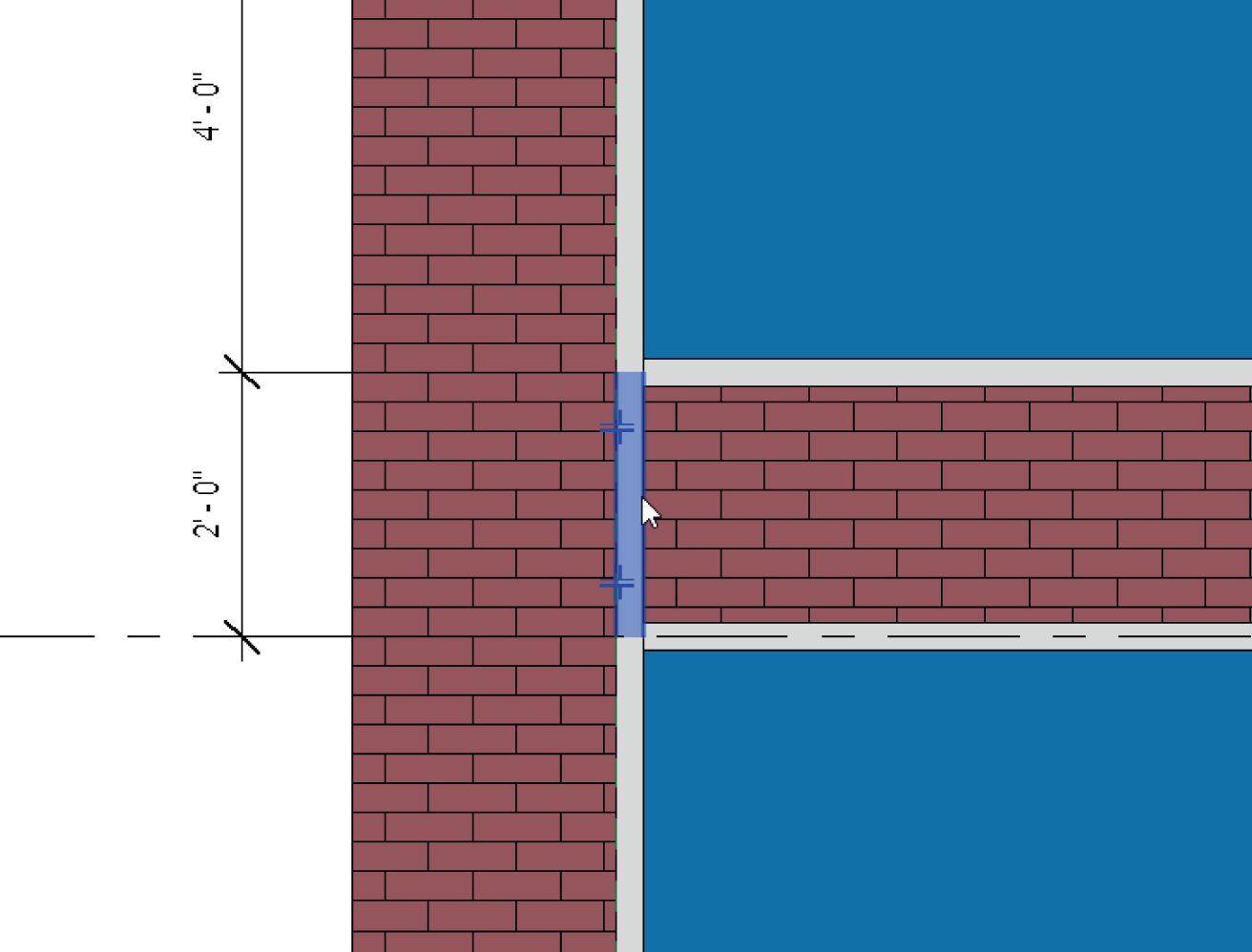
FIGURE 15.47 Selecting the mullion
- Select the small mullion piece that lies between the brick and the CMU. (You'll have to press the Tab key several times to accomplish this.)
- You can either modify the join (as shown in Figure 15.47) or press the Delete key and remove the mullion. In this case, delete the mullion. Repeat the procedure for other similar areas. See Figure 15.48.
What have you accomplished? You've embedded a predefined curtain wall into a radial profile, and you've added a curtain system to a giant glass panel by hand. The only thing left to do is to apply a curtain wall to a sloping surface.
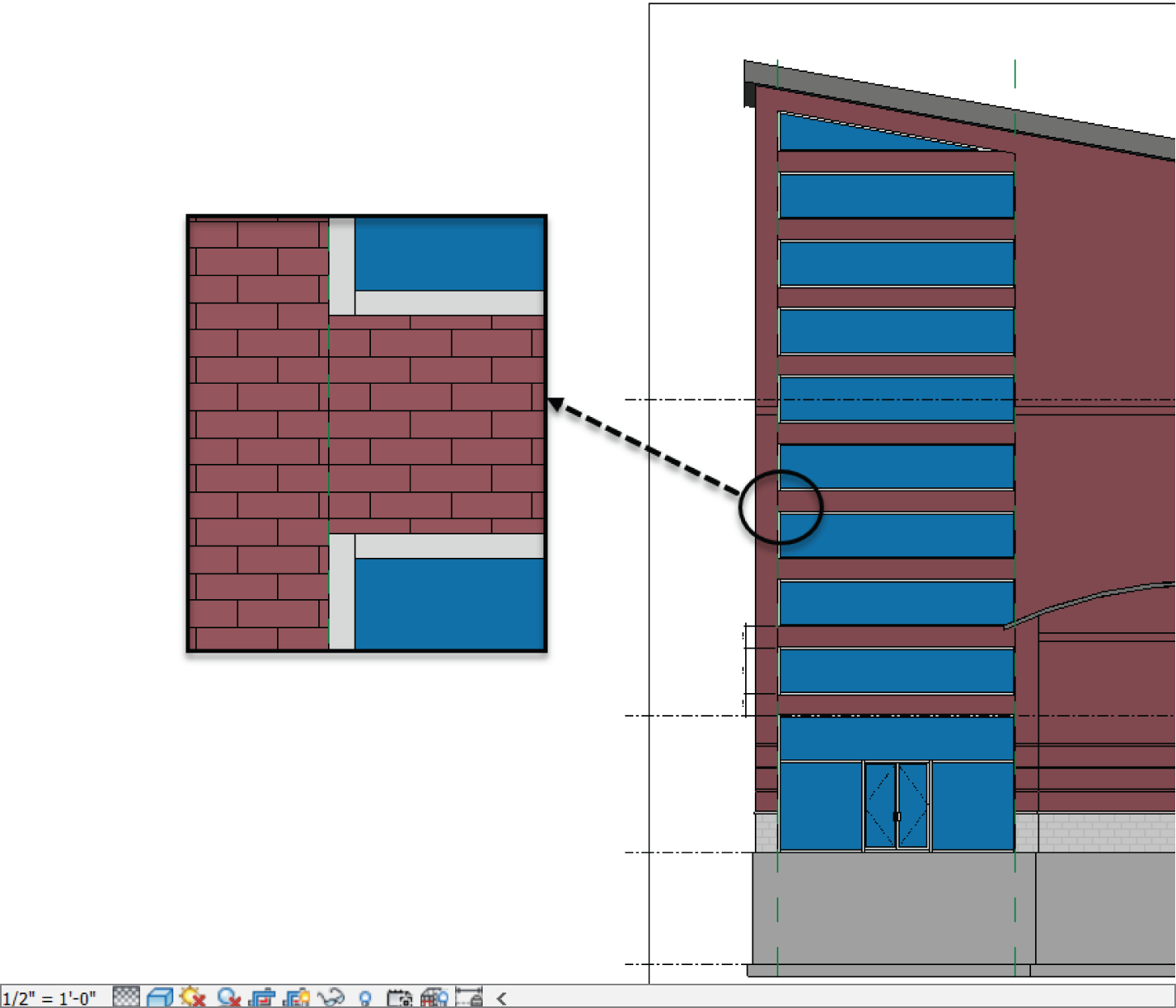
FIGURE 15.48 Cleaning up the mullions
Are You Experienced?
Now you can…
- create custom compound walls by using the Edit Assembly dialog
- create stacked walls by joining compound walls together
- create sweeps in a wall's profile and freeform sweeps
- create curtain walls by using a predefined wall system and from a blank panel
